A couple of months ago I’d found myself up in Burlington. I’d been planting some of the flower beds on campus, so annuals were on my mind. We (miraculously) got a place to park right outside the store, and I jump out. Looking towards the road, I see an abomination of an annual planting, one of the cliches in the modern landscape, the sign planting. I’ll let the picture do the talking here. (click on all the pictures to view a larger size)
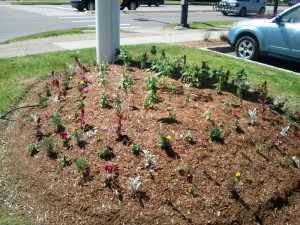 I’m not an expert, but I will admit to an opinion or two. Granted, planting annuals commercially, on a large scale in public places, is somewhat trickier than it appears. But it seems like so many people are lousing it all up. So over the past month or so I’ve been taking notes on what makes successful flower plantings, and, after crossing off the bits that made me sound like a cranky old guy, I’ve come up with some guidelines on how to make annual plantings that matter. Like all things, you’ll probably read some that apply to all sorts of plantings, even if you never find yourself with a 10′ by 50′ bed to fill with color.
I’m not an expert, but I will admit to an opinion or two. Granted, planting annuals commercially, on a large scale in public places, is somewhat trickier than it appears. But it seems like so many people are lousing it all up. So over the past month or so I’ve been taking notes on what makes successful flower plantings, and, after crossing off the bits that made me sound like a cranky old guy, I’ve come up with some guidelines on how to make annual plantings that matter. Like all things, you’ll probably read some that apply to all sorts of plantings, even if you never find yourself with a 10′ by 50′ bed to fill with color.
1. Consider your audience.
Where are people viewing your planting? This is the very first step to consider before planting. Gardens can be viewed in very different ways, depending on where the viewer is located. Like the flagpole planting above. I count 6 kinds of flowers mashed together. The viewer for this garden? Drivers and passengers on Dorset Street. The viewer here is driving at 30 mph. It’s not a time to be subtle. The myriad of different colors in a small area at best look like a greenhouse just threw up on the lawn and, at worst, won’t even be seen. Scale is important too-what’s the backdrop? Here’s another example.
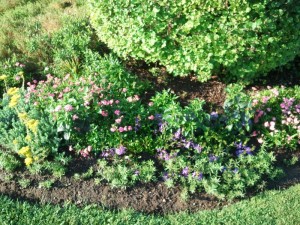
I count five of six kinds of flowers here, kinda mish-mashed together in about 3 feet. It’s a nice combination, certainly something I wouldn’t have come up with (too subtle for my outlandish guy taste), and looks nice while walking right next to it. But look at it in the context of the rest of the landscape-
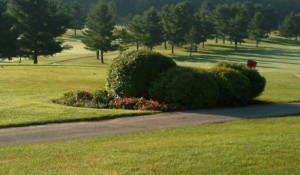 Can you even see the subtle pinks, blues and yellows? Or is the scene dominated by the giant yews, and the annuals have lost the battle?
Can you even see the subtle pinks, blues and yellows? Or is the scene dominated by the giant yews, and the annuals have lost the battle?
Take this better example, the front of a flower border in a formal backyard setting. The masses of flowers, while pretty when up close, are still beautiful from a distance, in this case, the back porch and sitting area where most functions take place.
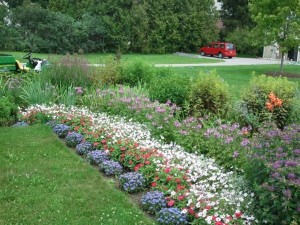
2. Buy larger.
I fully realize it’s 90 degrees outside right now. That’s why I’m inside writing. But to a plant, summer in Vermont is pretty short. Why wait? Particularly on large plantings. Go ahead and treat yourself to larger plants, maybe annuals that come in 4″ pots. They are in bloom right when you plant them, look like something immediately. The little plants from 4 and 6 packs just look silly out in the landscape, and take a month or so to start looking like anything. Save them for filler in your landscape, or the vegetable bed. This is some lost looking 6 pack flowers in the midst of some large perennials, taken about a month ago. They still look a little lost even now.
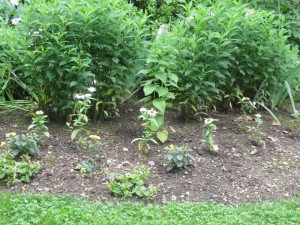
3. Buy more of less.
This relates to what we’ve already discussed up above-planting large groups of plants to make a statement. I will admit to that heady spring rush, the first trip through the greenhouse when everything looks so vibrant and new after snow all winter. Resist that temptation to buy one of everything. More impact can be had from massing a couple of types of plants together.
And when you fail, you can fail big. Like this mass planting of a large leaved red Oxalis planted in front of Proctor hall last year…
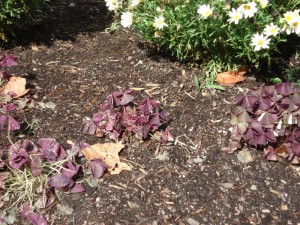
4. Avoid straight Lines.
Quite a while ago on an estate in Charlotte I planted a spectacular row of peonies. My memory says the line stretched for hundreds of feet, so it was probably about 50. They started to fill in great, flower all about the same time, and was beginning to look like the hedge we intended. After a couple of years, a water line broke in January directly underneath the line. We dug the peonies (they weren’t screaming, but I thought I saw the roots shivering), fixed the line, and planted them back. To this day, the dug plants are a little smaller, and the hedge dips a half of a foot where they are.
Staight lines are stressful. Ask anyone that has a boxwood hedge. They cower in fear that some random car will plow through the line. What if one or two of the flowers die? You’re looking at a hole all summer long. Maybe you can live with that.
5. Read the tags that came with the plants.
There are hundreds of varieties of annuals. The goal of growing them in a greenhouse is to get them all saleable for the end of May, so they need to fill out the pot. So yes, they all look about the same size. What you may not know is that some had to be started in March to look that big (geraniums), while others may have been started only a month or so ago (Bacopa), and still others may have been thrown on the greenhouse floor, stepped on a couple times, deprived of water, cursed at, and thrown in the pot last week so they don’t get too large too fast (petunias). One of my favorite flowers, Anagalis, looks small and dainty in a four inch pot, cause they don’t really like greenhouse life. The tag recommends a 14-20″ spacing, and they indeed grow all of that. You wouldn’t know it looking at them in May. Go look at the front of Emma Willard now, though. It looks like this-
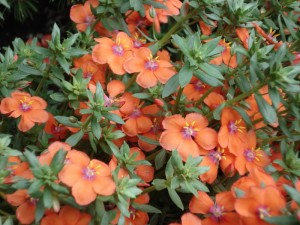
6. Ignore the tags.
Some companies are better with their tags than others. Of course, they are looking to sell more plants, so spacing may get fudged a little bit. Some companies, though, are totally inexcusable. Proven Winners, for example. One of my standards in planting are Supertunias, a new hybrid of Petunias that spread quickly with large flowers in nice shades that don’t require much fuss (trimming, deadheading). An average Supertunia at Middlebury gets spaced 2′ apart, and they are still touching in a month. Even the ones where the tag says 6-10″ spacing.
Maybe they mean in a pot.
But don’t get too worked up about spacing. And please don’t use a tape measure. I can remember passing by a landscaper in Shelburne lining a sidewalk in front of a funeral home with two kinds of perennials, both spreaders (that’s a nice way of saying invasive, one of them was an artemisia.) He was out there with a tape measure, moving each plant a quarter inch this way or that, until they were just right. Within a month, they were filled out. The next year, the plants were all mushed together. Cound’t tell they were perfect anymore.
7. Use perennials and shrubs.
Annuals are expensive. And they don’t come back. And while large beds are nice, and massing flowers makes the most impact, budgets don’t always allow. So selective use of perennials and shrubs can fill in a lot of space and still give a flower garden effect.
Here’s a good example from a bed on Court Street-notice the Shasta Daisies in the center of the bed. That’s a good choice, as they bloom in the middle of the summer, and, with one deadheading (see below) they will rebloom in the fall. Even not in bloom, they stay an attractive green providing a nice backdrop.
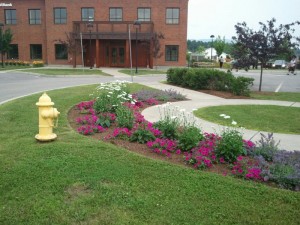 Another example is in front of the Johnson Art Building. This is a large bed, in an area of campus that desperately needed a splash of color. Planting this bed strictly in annuals would be cost prohibitive, and a bear to maintain, so we planted the center. Sticking with the bright color idea, that’s a Bloodgood Japanese maple in the center, with a gold Juniper at it’s base, and a matching set of a dwarf Blue Spruce, flanked by a dark blue Salvia. It’s enough of a color palate that we aren’t hemmed in each year in color choice.
Another example is in front of the Johnson Art Building. This is a large bed, in an area of campus that desperately needed a splash of color. Planting this bed strictly in annuals would be cost prohibitive, and a bear to maintain, so we planted the center. Sticking with the bright color idea, that’s a Bloodgood Japanese maple in the center, with a gold Juniper at it’s base, and a matching set of a dwarf Blue Spruce, flanked by a dark blue Salvia. It’s enough of a color palate that we aren’t hemmed in each year in color choice.
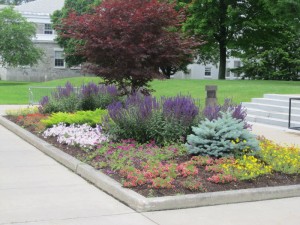 It’s tough to see in this picture, but the gold Juniper is offset , slashing diagonally across the bed. This gives four zones in the bed, a large and a small, so we can can go with two different color schemes and not have them clash. Pink, peachy, and purple on one side, and then golds and reds on the other.The blue spruce is the separator between the two.
It’s tough to see in this picture, but the gold Juniper is offset , slashing diagonally across the bed. This gives four zones in the bed, a large and a small, so we can can go with two different color schemes and not have them clash. Pink, peachy, and purple on one side, and then golds and reds on the other.The blue spruce is the separator between the two.
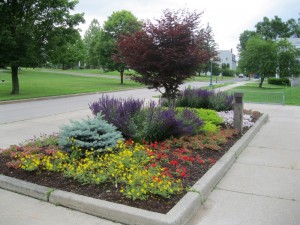
8. Take care of your plants.
I’m a firm believer in tough love. I water new landscape plantings infrequently (water less, but more at one time). Annuals, though, live a coddled life in the greenhouse, with water and fertilizer daily. Taking them from an oreo and pop tart diet to the harsh realities of real soil can be difficult for them, like learning to do your laundry freshman year. In the fall we remove bark mulch from the annual beds, and put on about 3″ of compost. Over the winter cold earthworms draw the compost down into the soil, and we are able to plant right into compost/soil next spring.
Water. A lot, then a little. This year I watered twice the first week, once the second (rain or not, it didn’t matter), then the rest of the growing season if it hasn’t rained for week I’ll water. And we’re talking a real rain, more than a half of an inch. Anything less doesn’t count.
I don’t get too worked up about fertilizer. The compost does a good job of that. If I had to make an inorganic recommendation, though, I’d say something in a slow release.Organic fertilizers are wonderful, but if your annuals are deficient, you probably don’t want to be waiting for the right soil temps, enzymes, and mineral breakdown of organics.
9. Avoid cliches.
Not only planting the base of a flagpole, but I’m talking about the tipped planting pot with flowers in the ground “spilling” out of it, the cast iron bed frame in the ground making a “planting bed” (bed? Planting bed? Get it? Huh? Huh? Get it? Huh?), the toilet bowl filled with flowers (Route 125 in Hancock), or the death march of marigolds lining a walk to a front door.
Cliches can be a more subtle, too, but just as tiring. Like rock plantings. Here’s a local example-
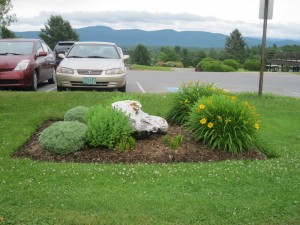 A rock in the middle of nowhere, and two each of the three most popular perennials-Silver mound Artemisia, Autumn Joy Sedum, and Stella D’Oro Daylily.
A rock in the middle of nowhere, and two each of the three most popular perennials-Silver mound Artemisia, Autumn Joy Sedum, and Stella D’Oro Daylily.
10. Ask a grade school kid about the color wheel.
It takes a LOT of flowers in a small area to be able to safely ignore color combinations, more than you are willing to plant. And the range of colors found in annuals now means that just because a color wheel says the two go together, it may not.
I will admit to landscaping like a guy. I’m just not very subtle. Bright, contrasty colors are my signature in flower plantings. Like yellows and golds next to Middlebury Blue college signs, or tacky reds and pinks underneath a Japanese maple. My favorite colors in perennials seem to be peaches and apricots. My favorite annual colors seemingly come out of a kindergarteners crayon box.
This goes back to the audience concept as well. All flower books seperate “hot” colors like red and orange from “cool” colors like blues. What they don’t say? Hot, bright colors look good from a distance, like shocking reds. Pale subtle colors look good closer up.
How about one color? Like Morning Star Grass, a green grass with a bright white streak up the center, with a white Bacopa at it’s base.
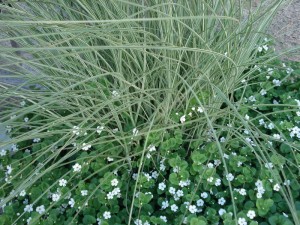 Another example-Rainbow’s End Dwarf Alberta Spruce, a rare spruce where the new growth comes out gold, with a gold Bidens crawling around the base.
Another example-Rainbow’s End Dwarf Alberta Spruce, a rare spruce where the new growth comes out gold, with a gold Bidens crawling around the base.
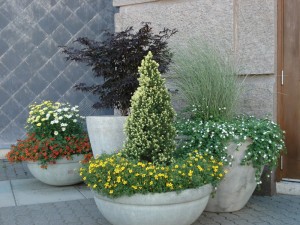
11. Fuss a little bit.
If you are making an investment in annuals, you are going to have to invest in some time into them as well. It’s worth it. A mid-summer haircut goes a long ways to keeping the plants looking fresh and happy for the haul to fall. Some modern annuals don’t need deadheading (removing spent flowers), but chopping off flowers and seedheads at once scares them into better blooms in a week or two. Petunias will branch and flower more if trimmed.
12. Use something big once in a while.
Start with something tall, and work down from there. Unfortunately, many annuals all seem to be about the same height, and that gets dull. Mess around with some grasses, or old fashioned plants like Datura or Night Flowering tobacco. Not only will they fill up a lot of space (cheaply!), but they’ll provide a focus point for the whole bed. Here’s a night flowering Tobacco in a pot with an Oxalis at the base. Even in the daytime, green is a color, and theOxalis has plenty of presence on it’s own.
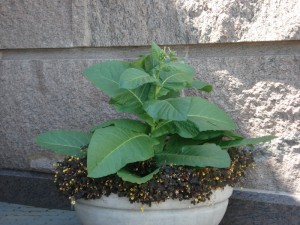
12. Have some fun.
Humor in the landscape can, and shoud be subtle. (remember what I was saying about cliches?) Annuals are such a broad catagory, that it’s easy to have fun with them, and like a joke, doesn’t need to live from year to year. I’ve seen all Black flowered gardens, for example, or all blue beds with one red “accidental” flower in the center. Or this-a funky grass called King Tut-an Egyptian Papyrus, that I decided to plant in front of the formal stone entrance to Old Chapel Road. It looks like I’d lost my mind. Naturally, I have.
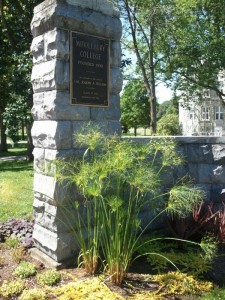
13. Steal ideas.
Horticulture has a grand tradition of theft. One of my favorite plant combinations I ever used was actually just discovered by the plants on a greenhouse bench being adjacent to one another.
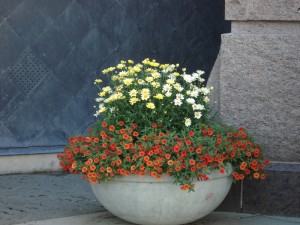
Steal ideas Draw inspiration from other sources, like art. Remember about the color wheel above? Ignore it, like that hack Claude Monet, and be brave enough to pair blues with pinks, or even use a surfeit of silver, even though it’s not on the color wheel at all.
14. Ignore everything I say.
I thought this coleus would look good in a bed.
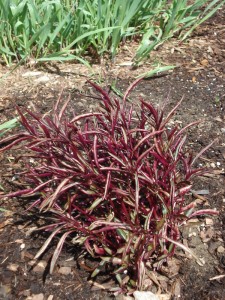

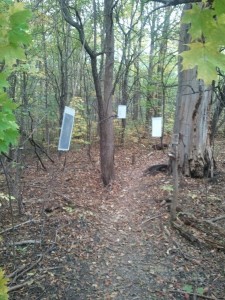
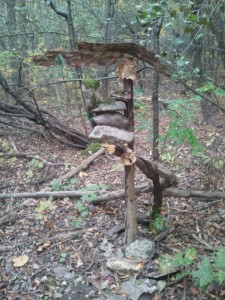
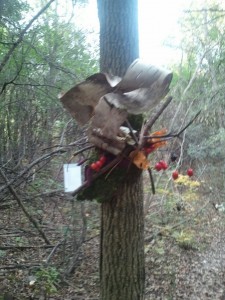
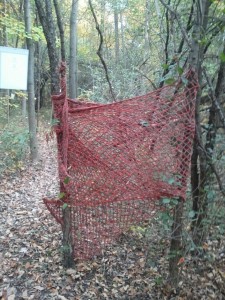
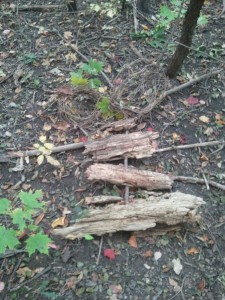
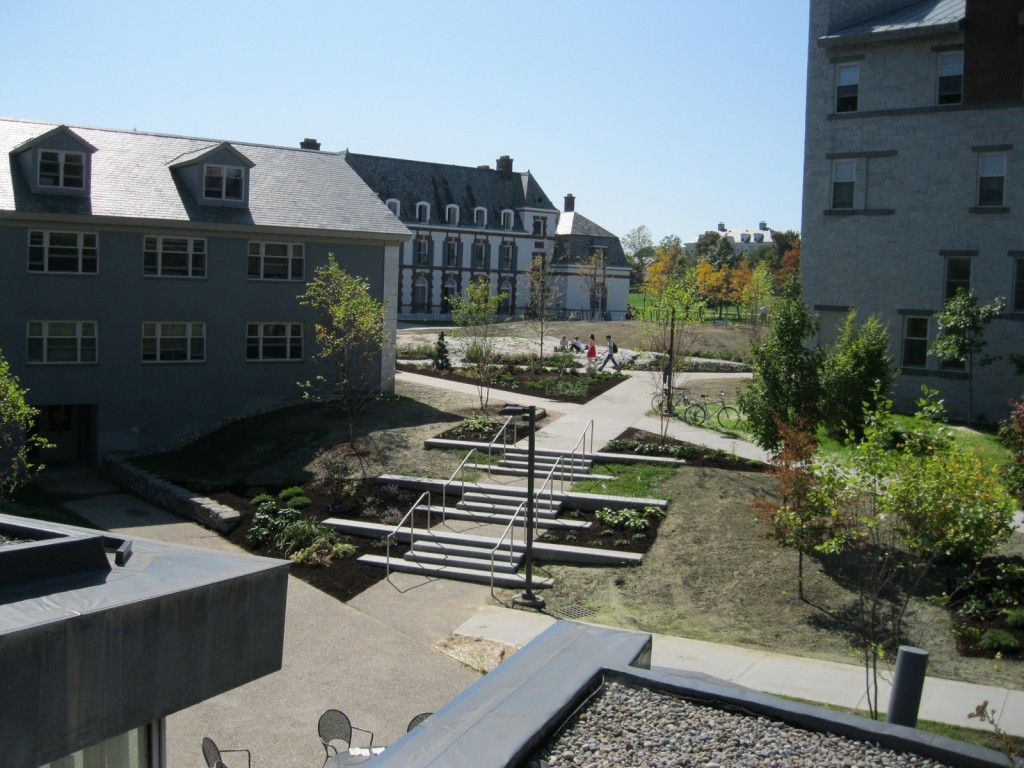

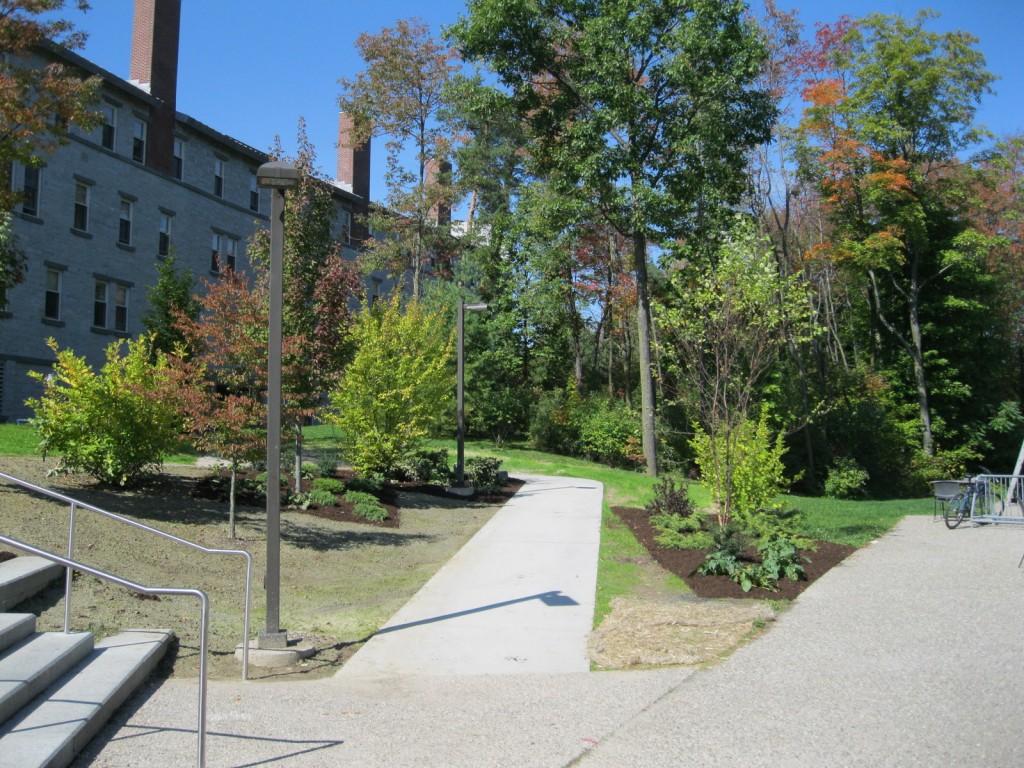
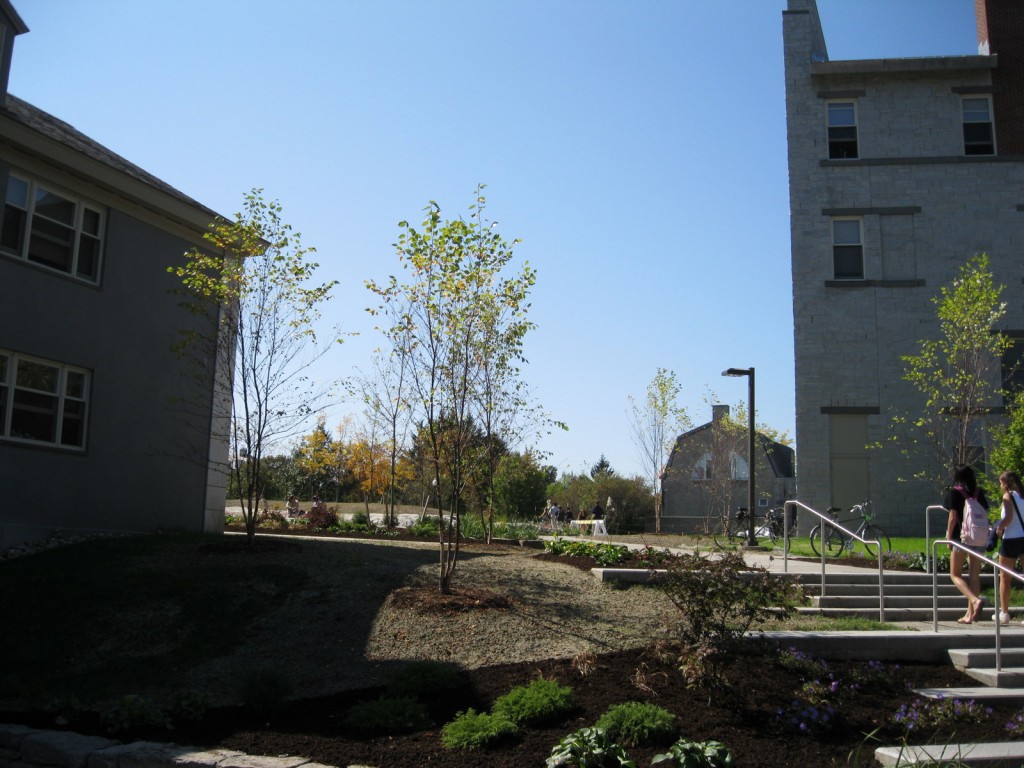

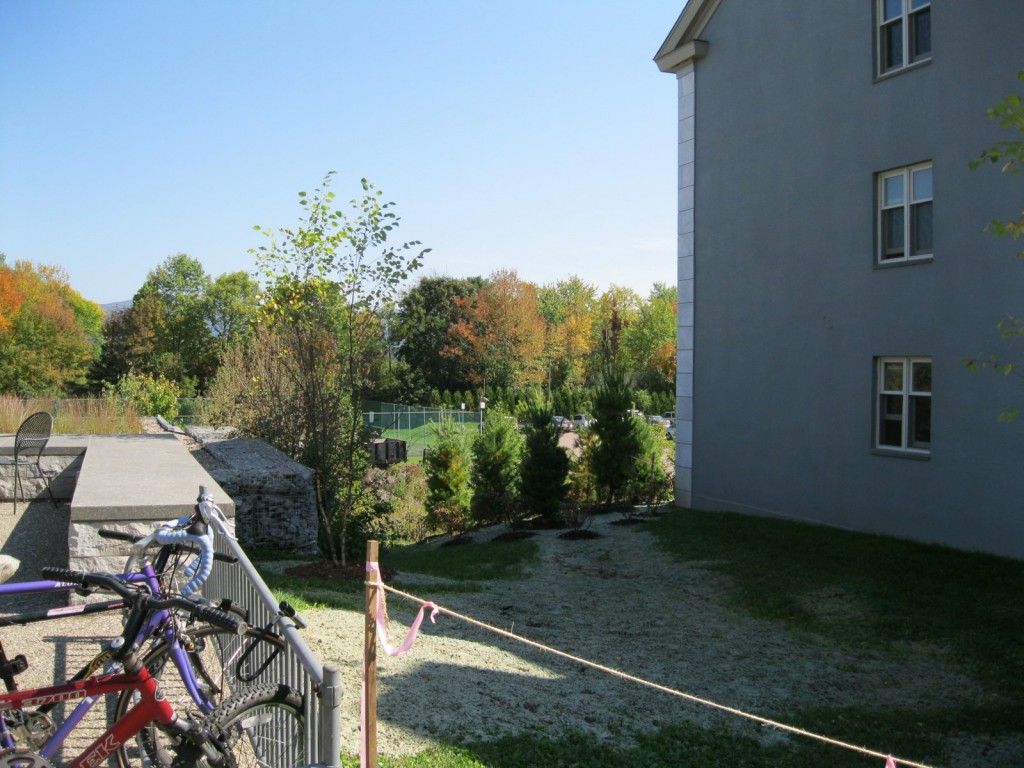
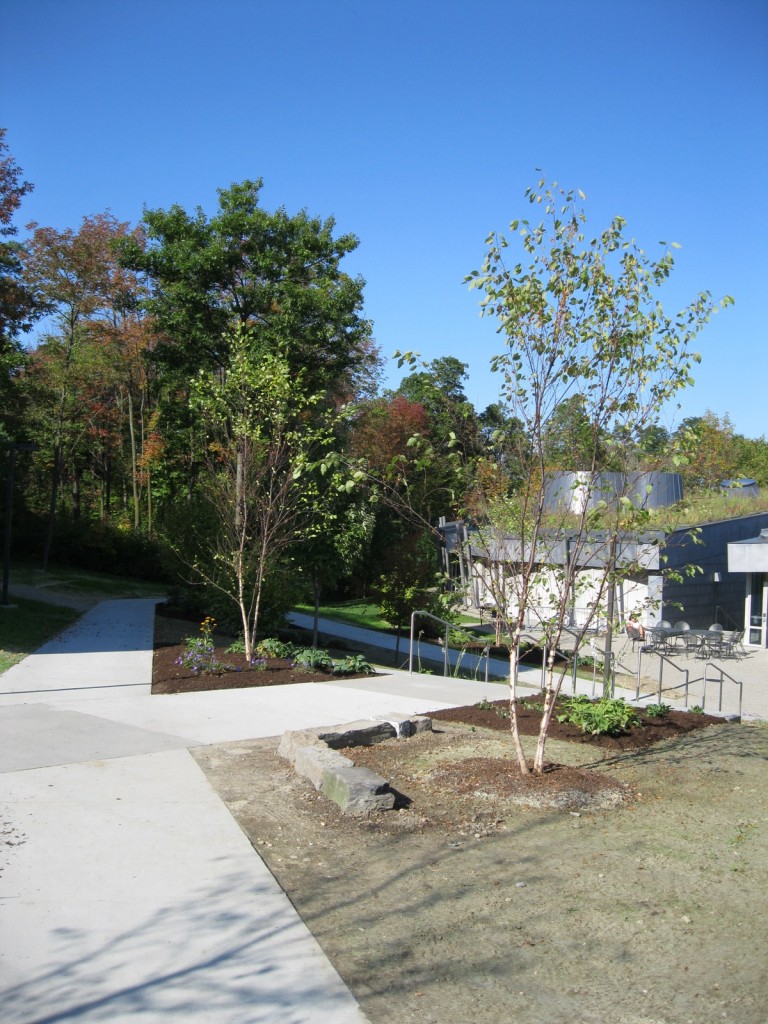
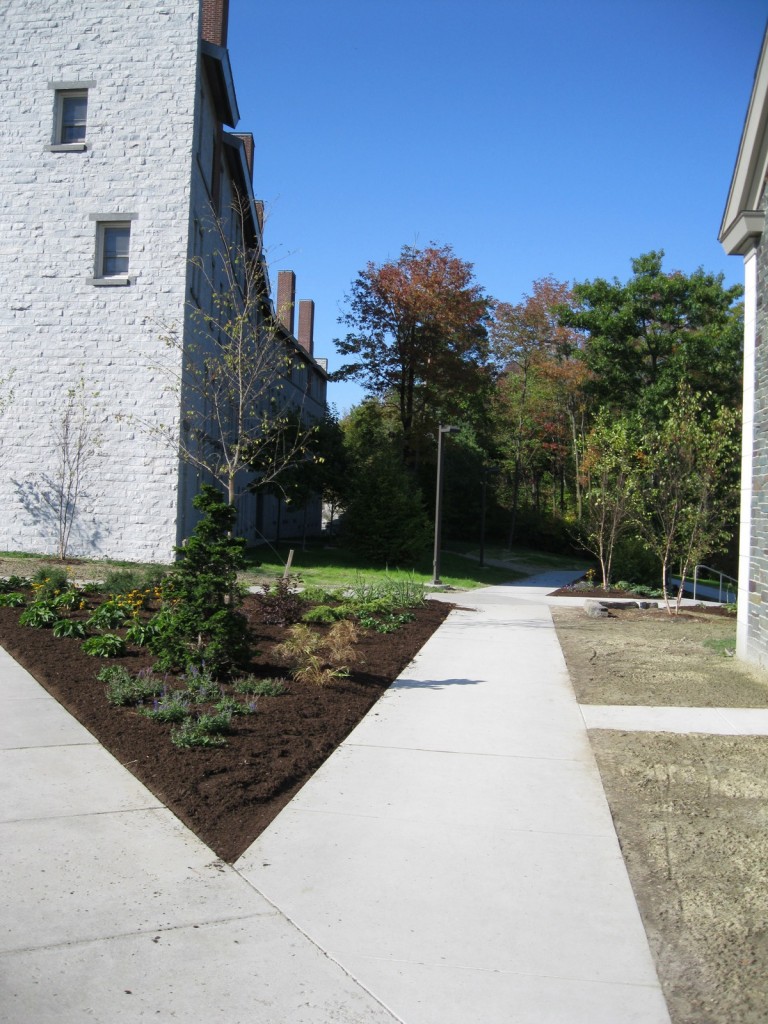
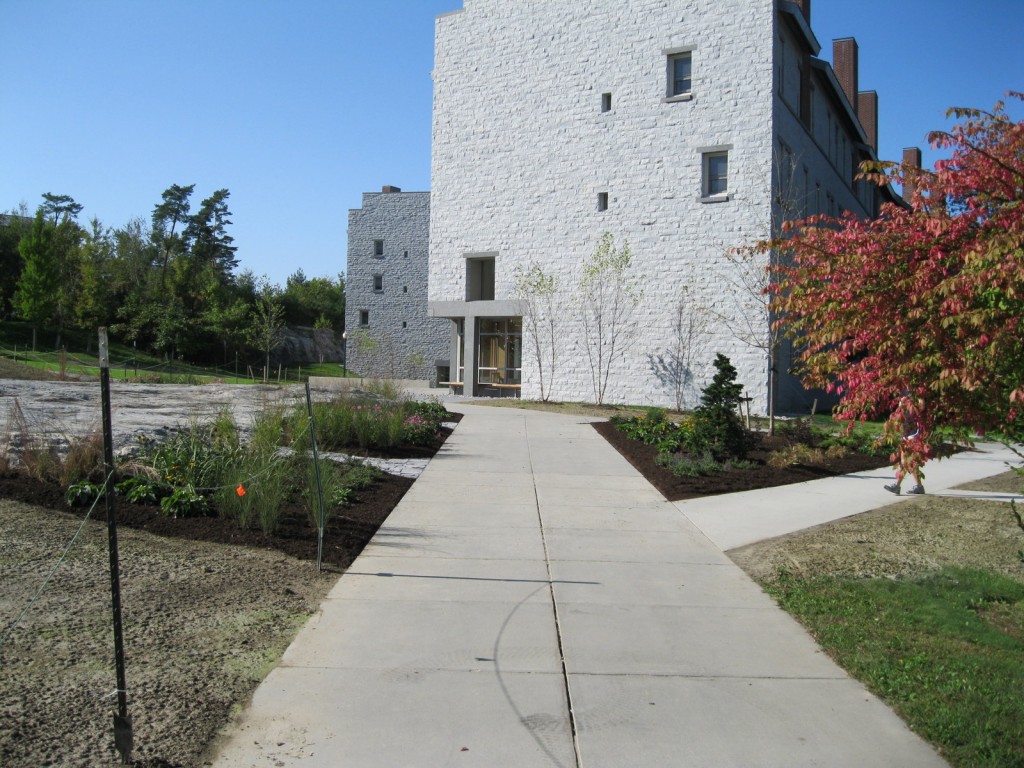
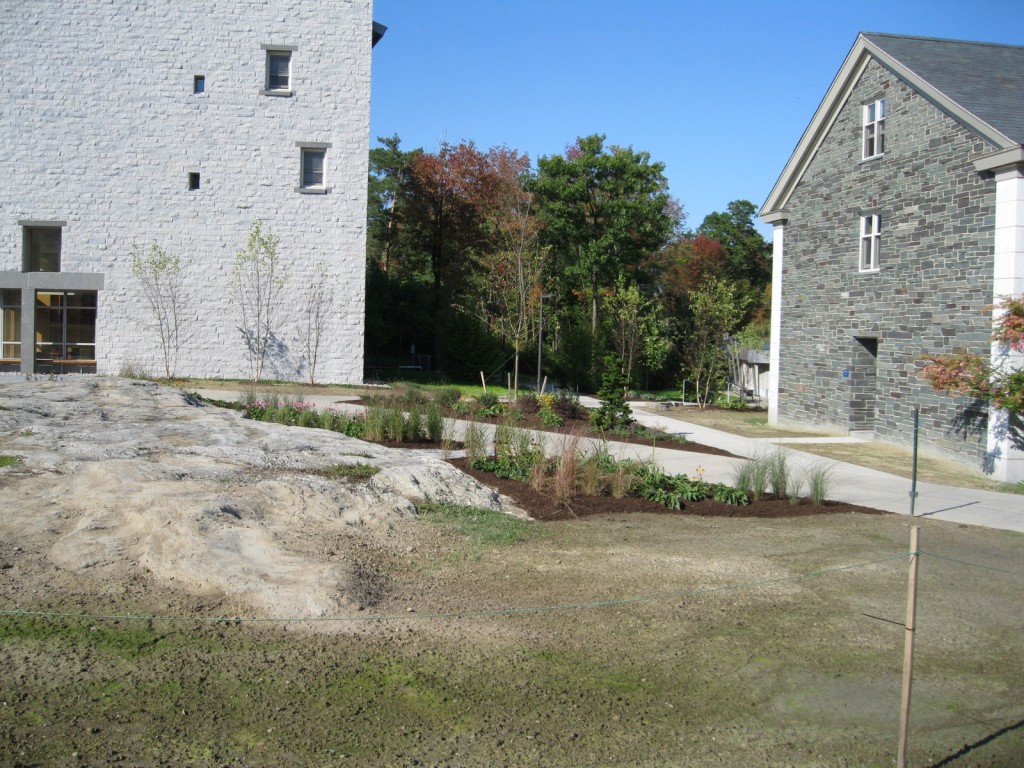
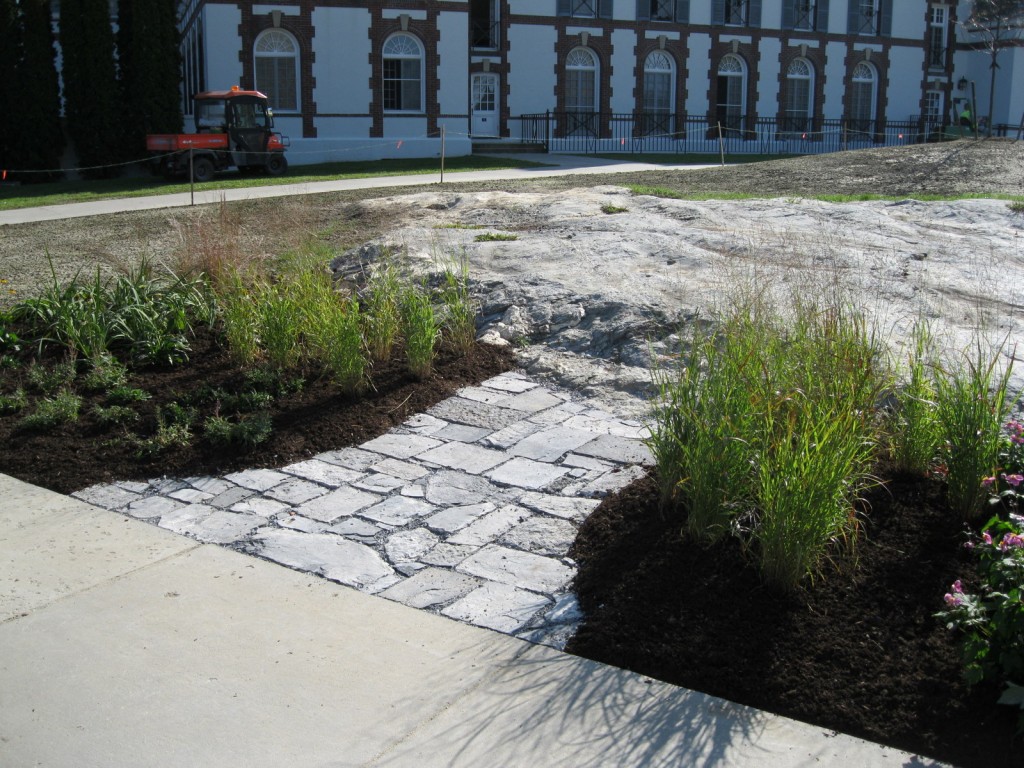
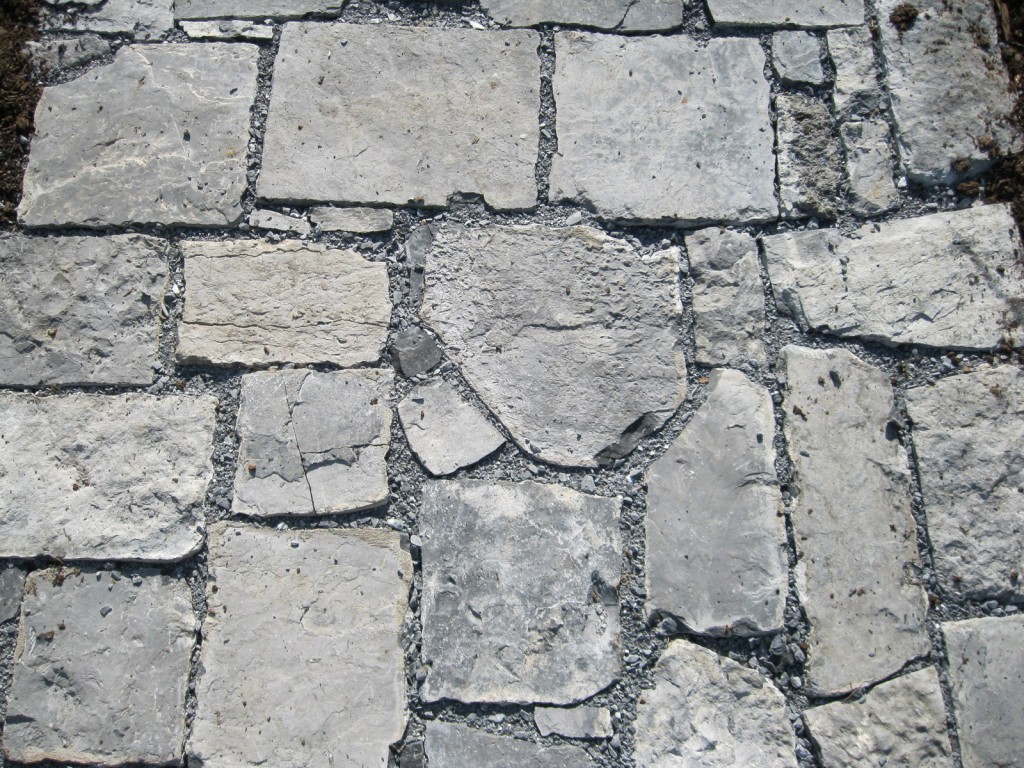
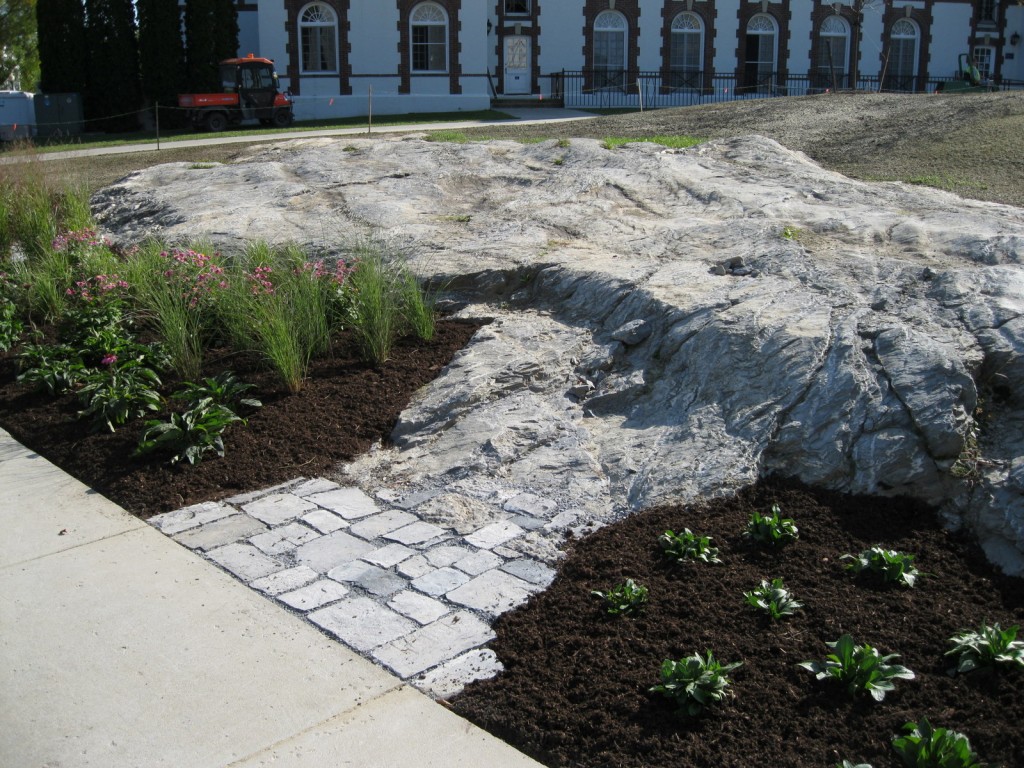
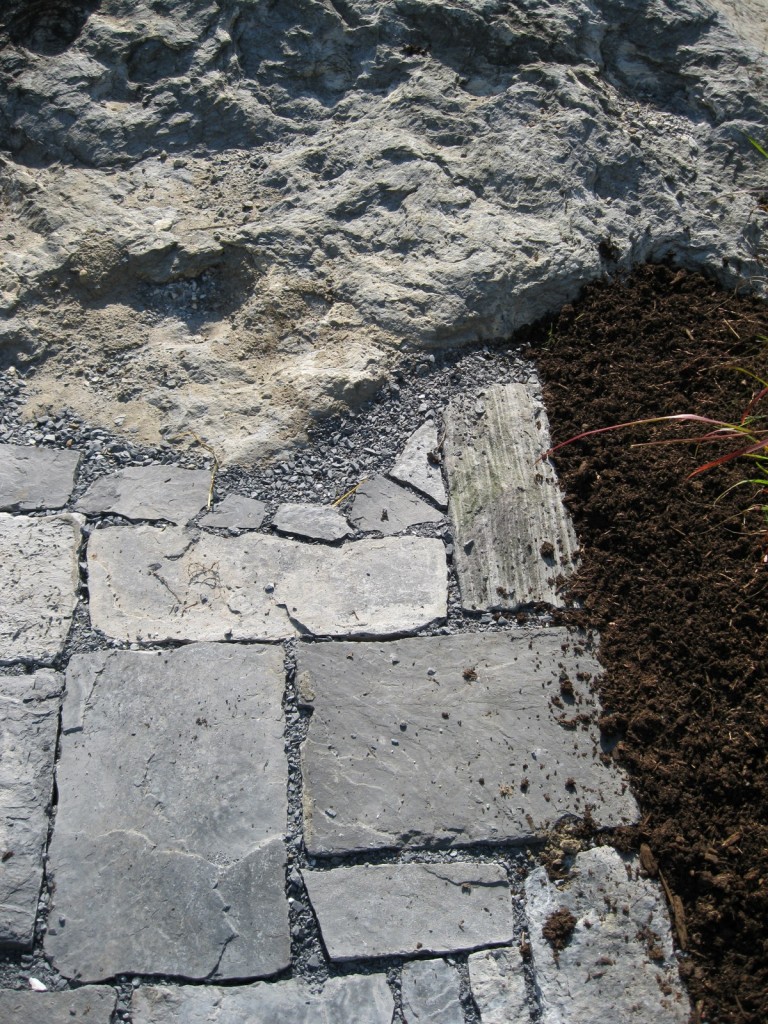
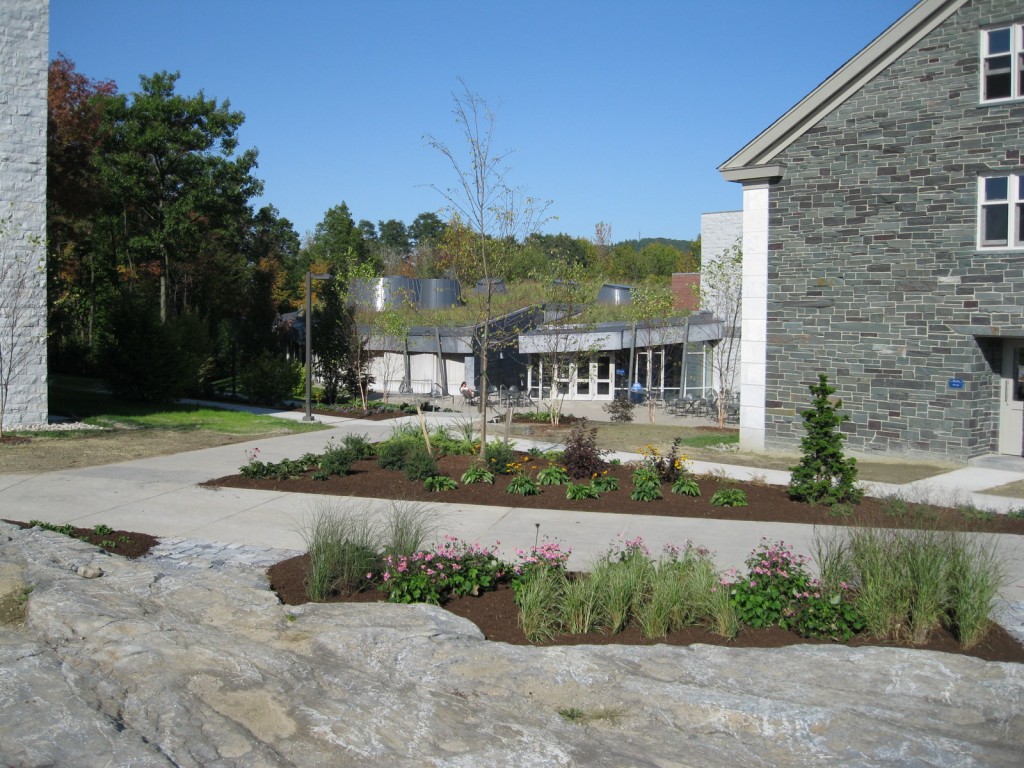
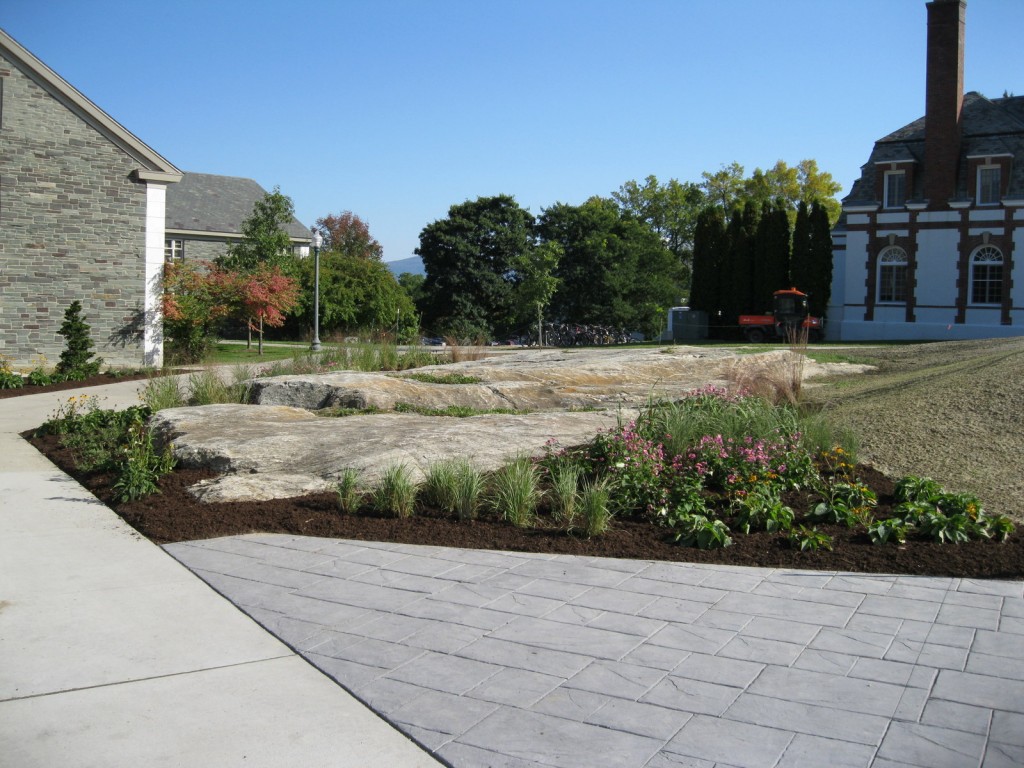
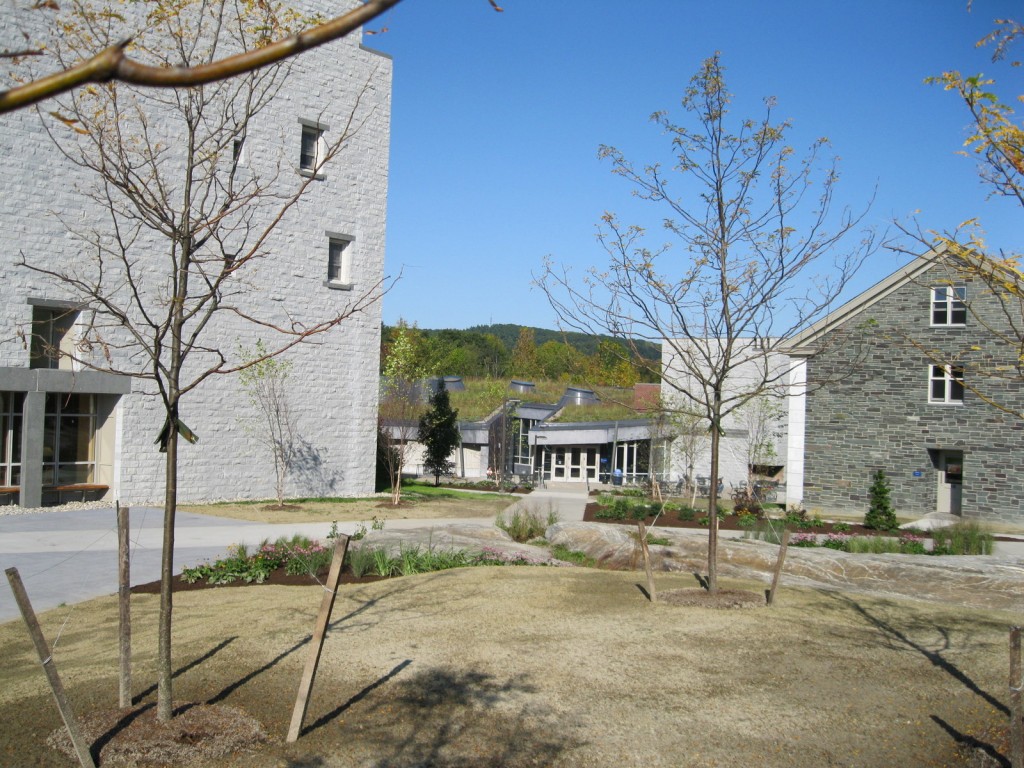
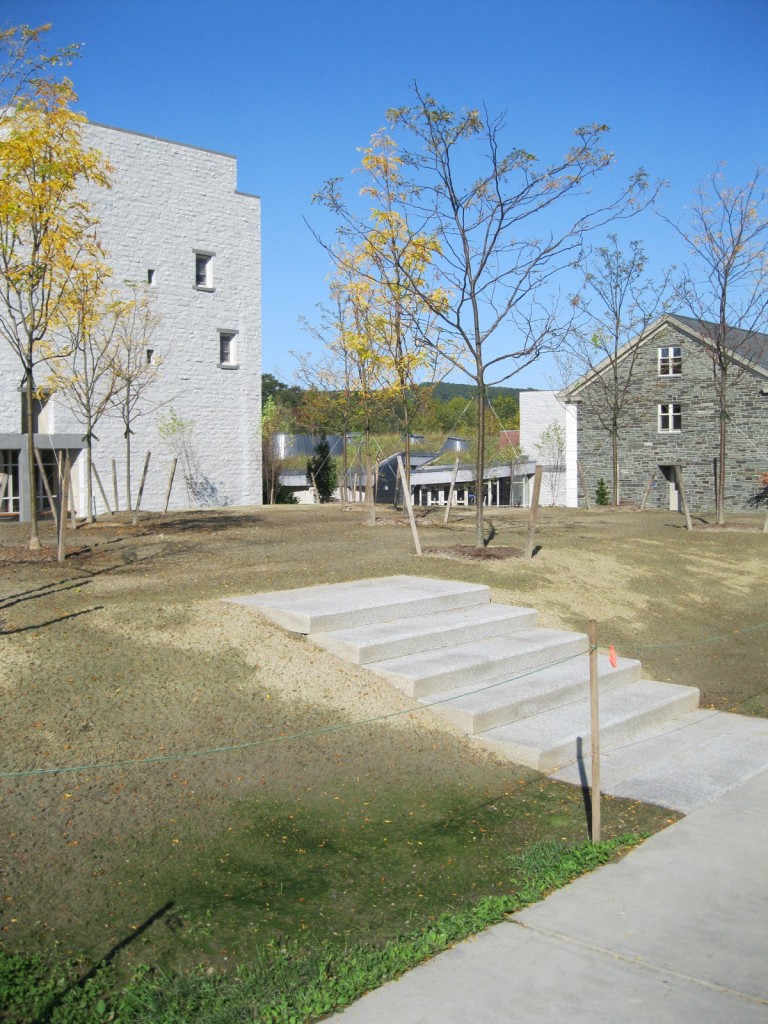


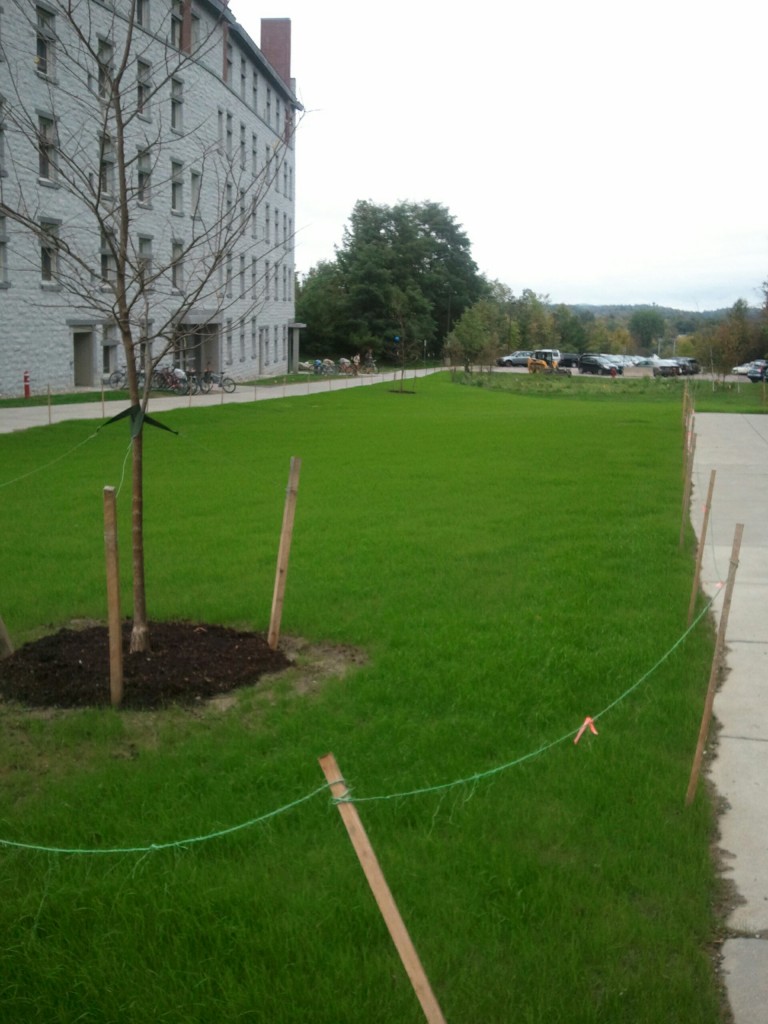
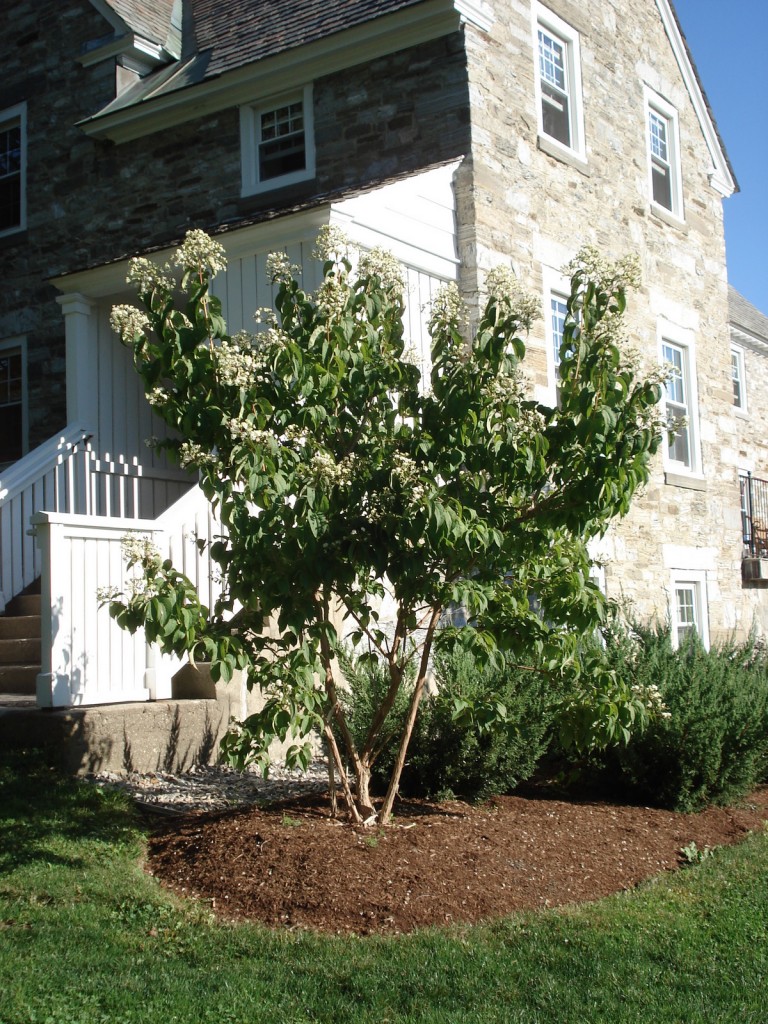
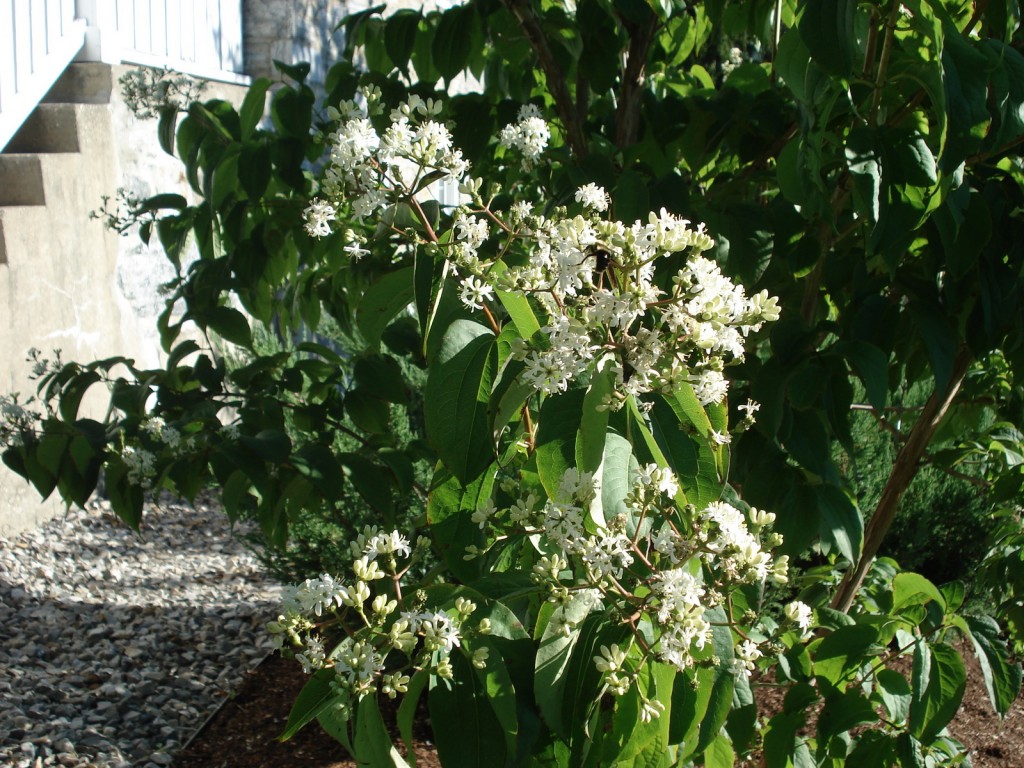
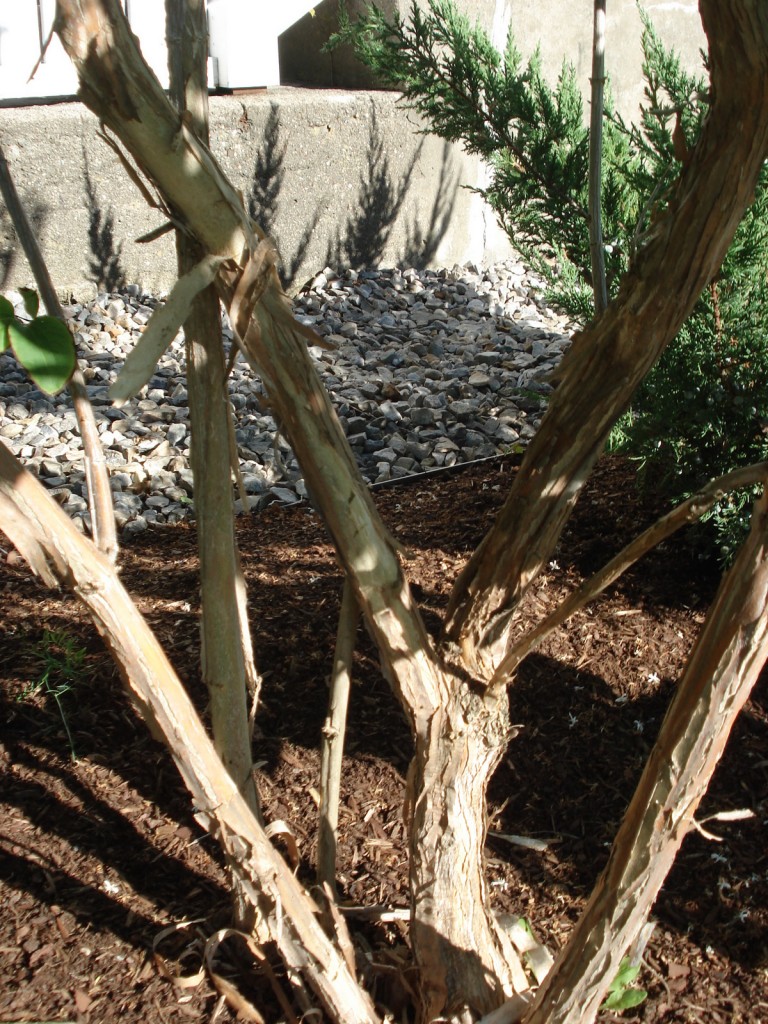
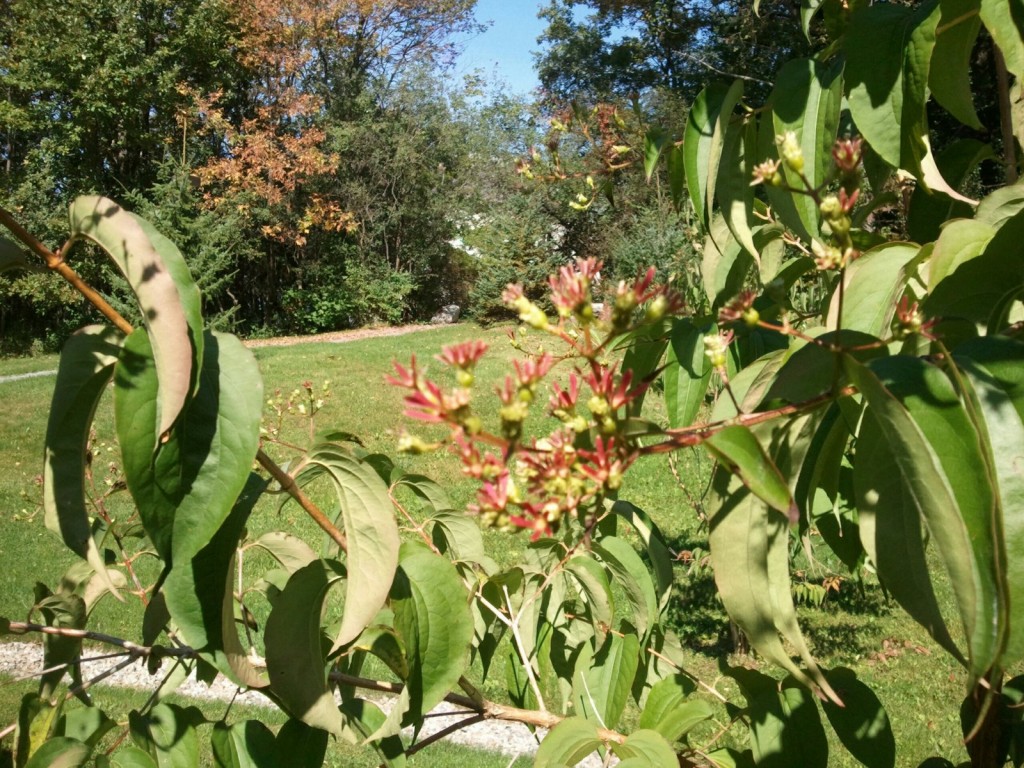

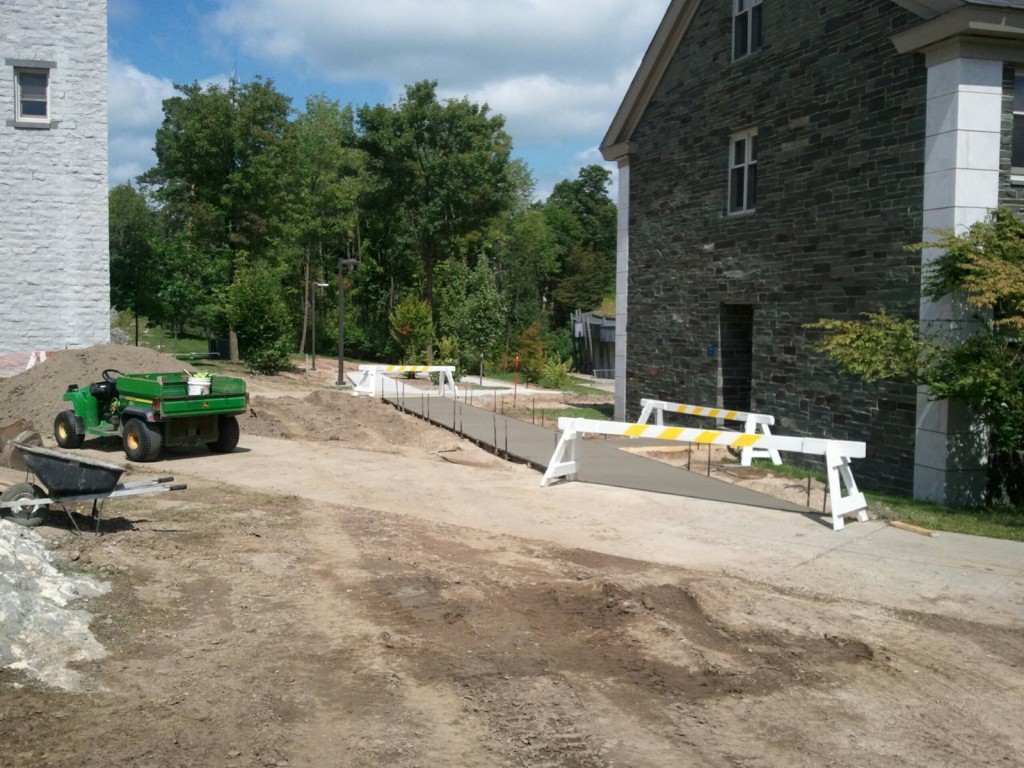
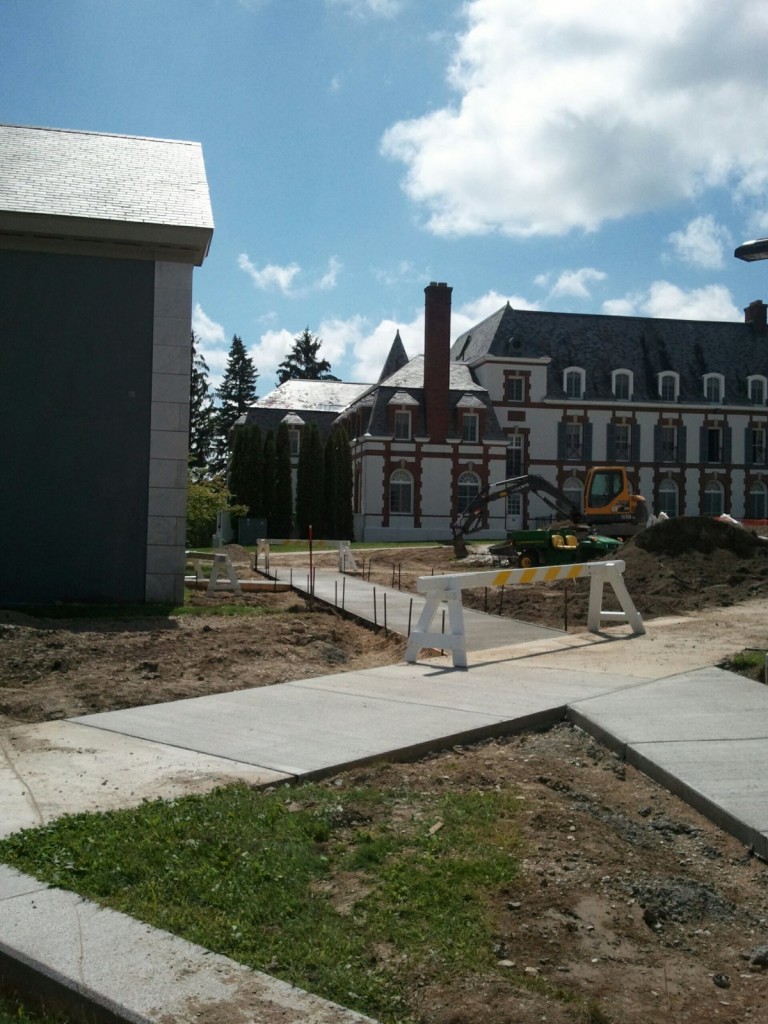
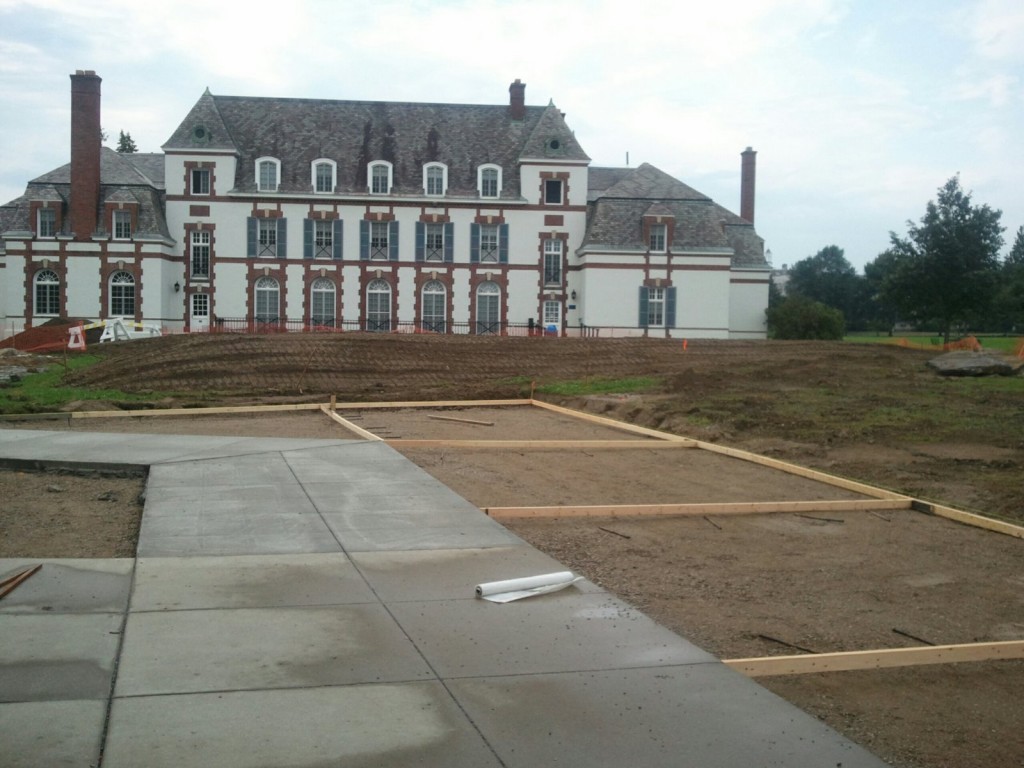

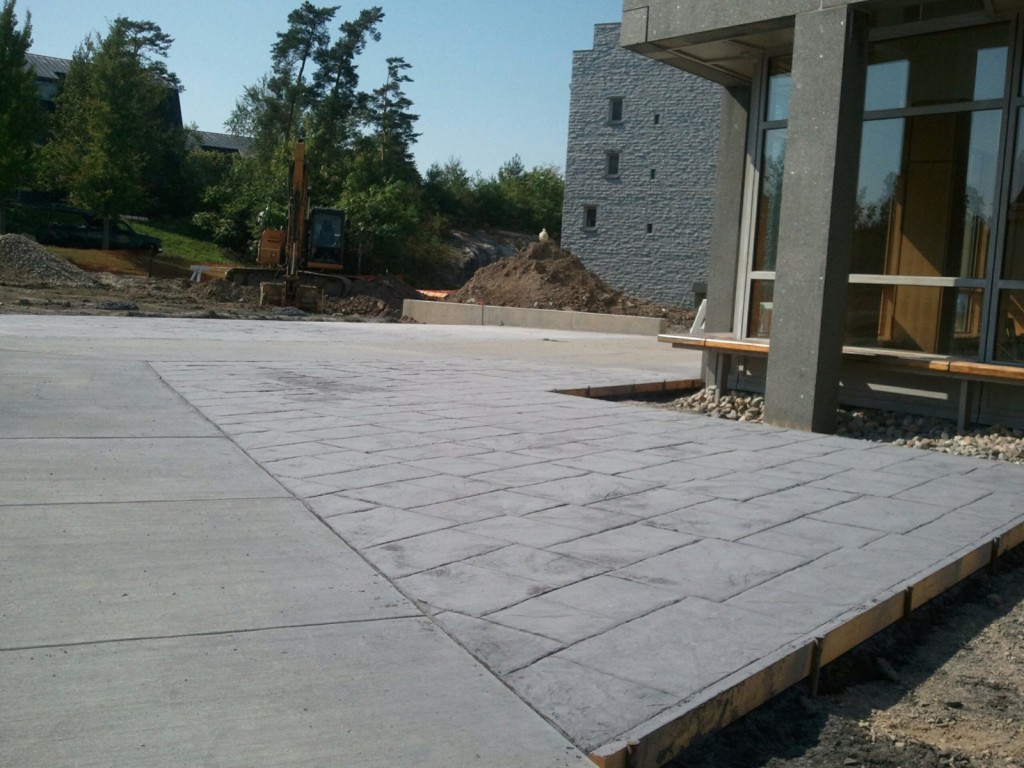
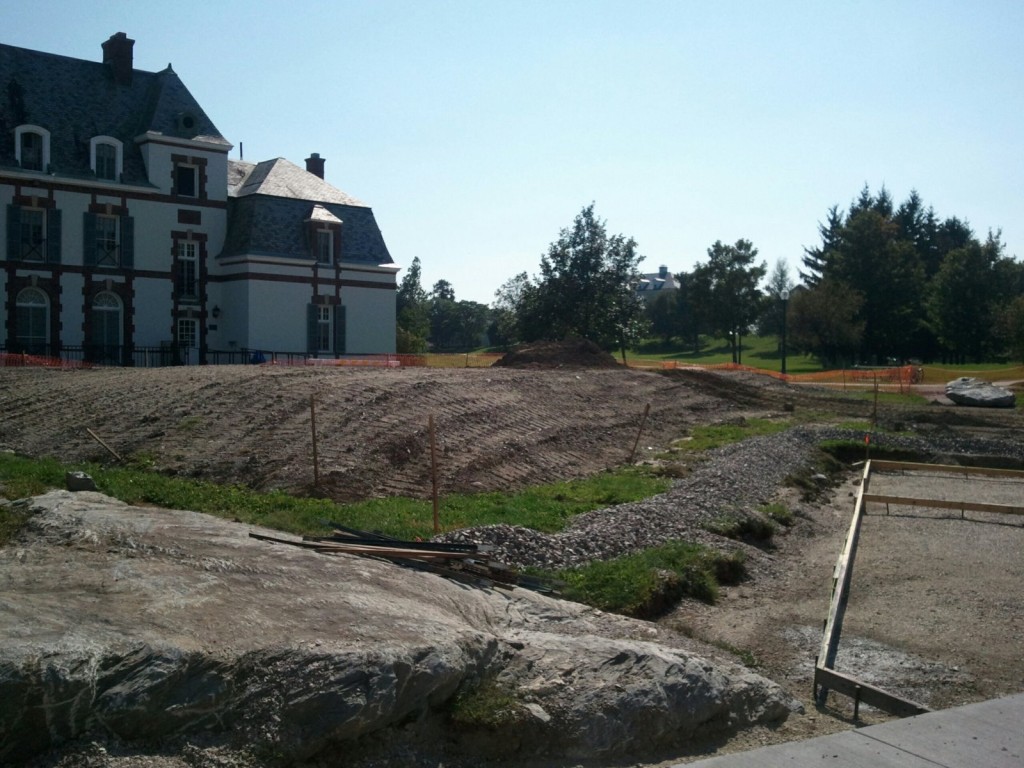
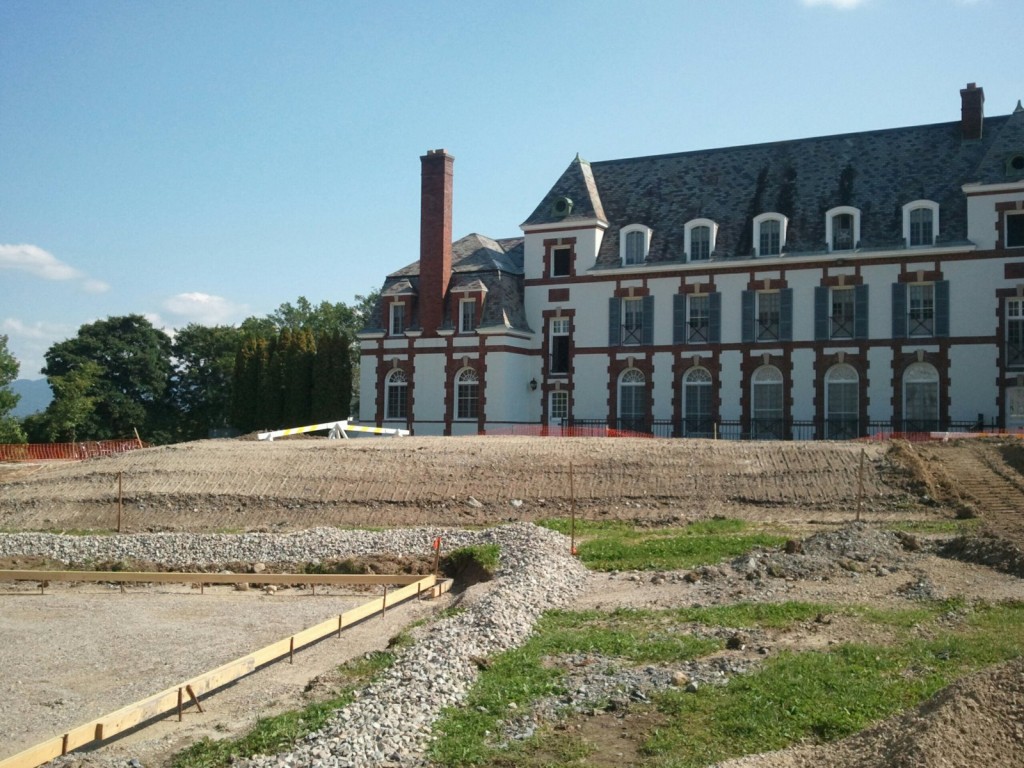
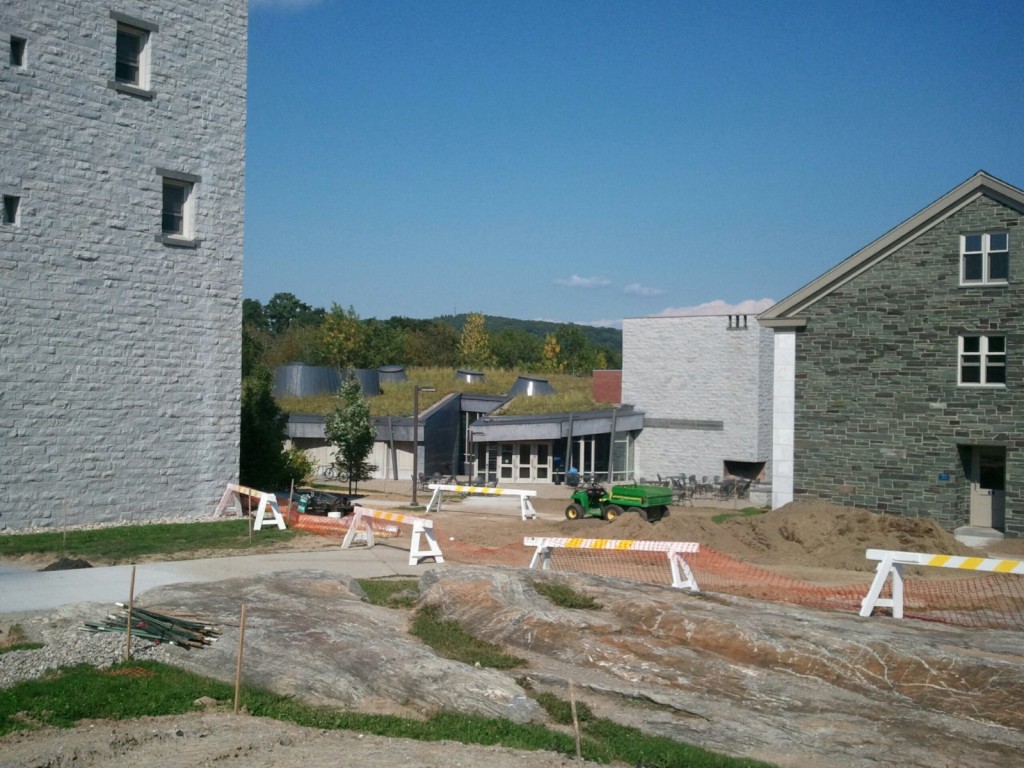


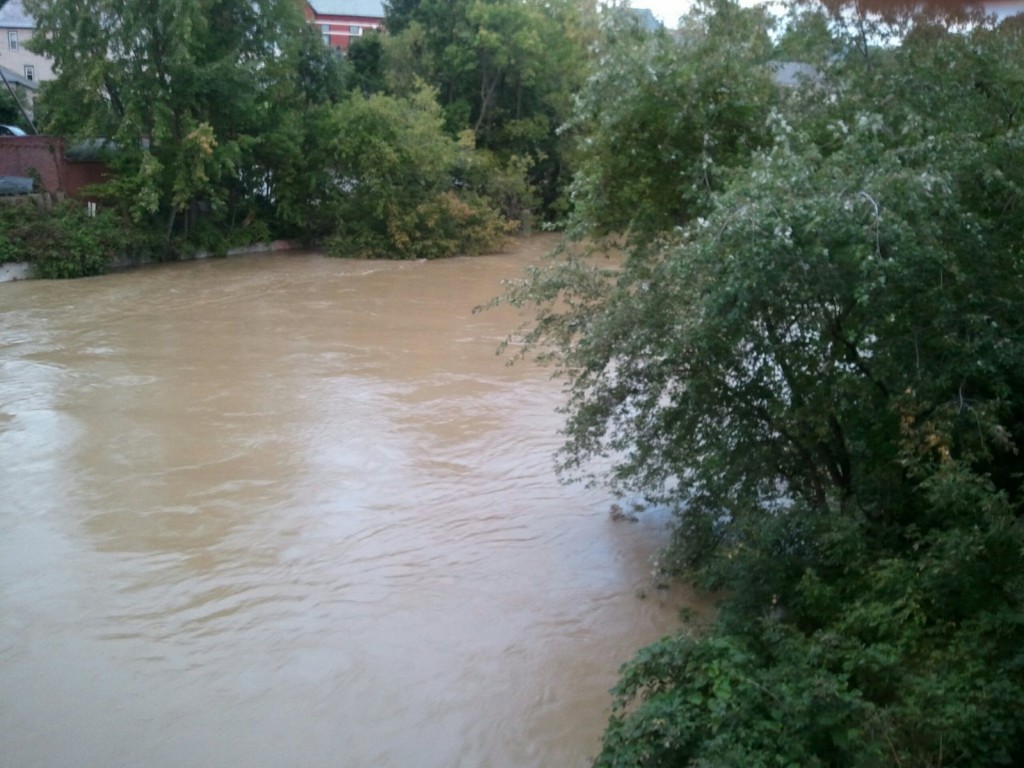
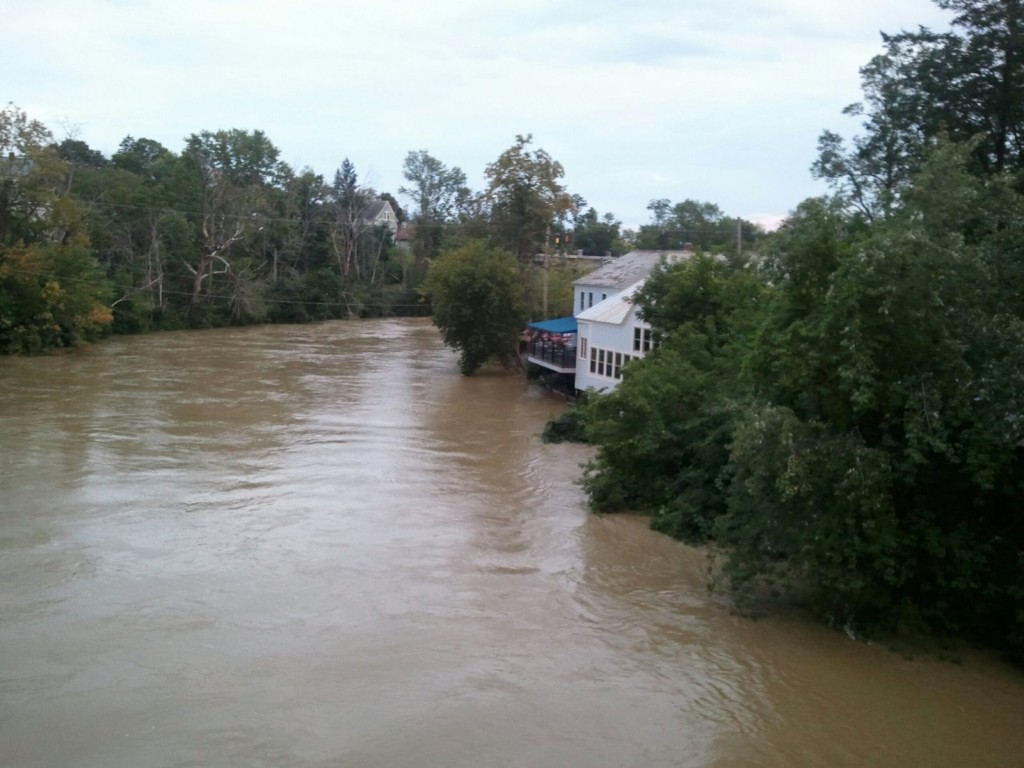
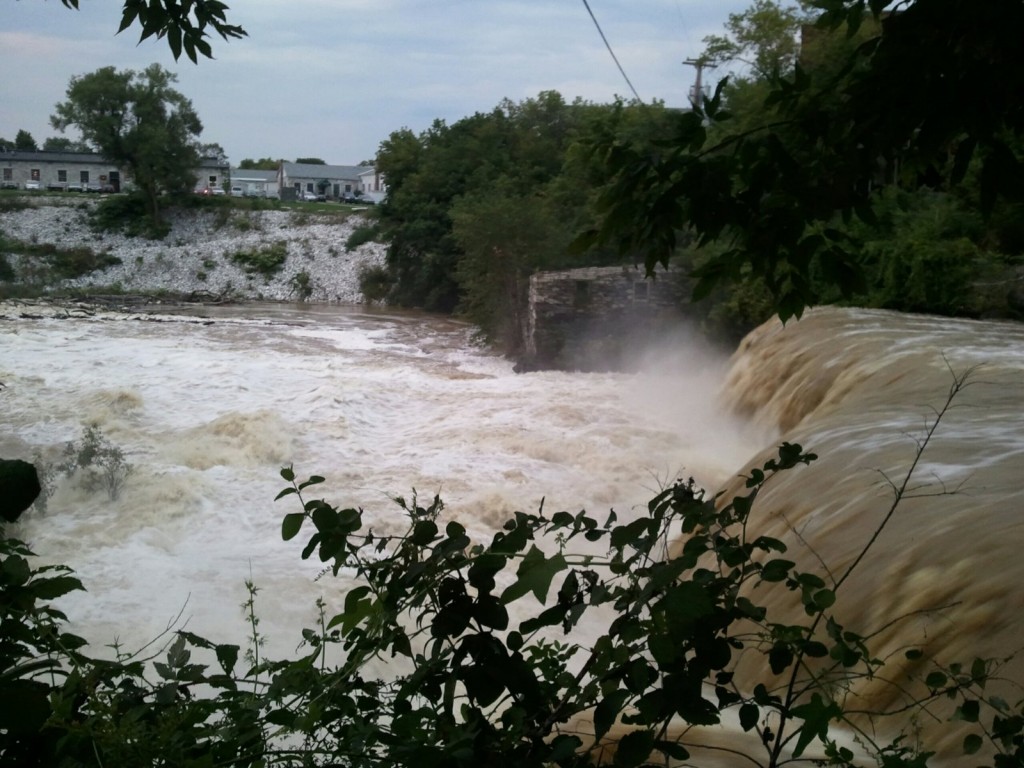
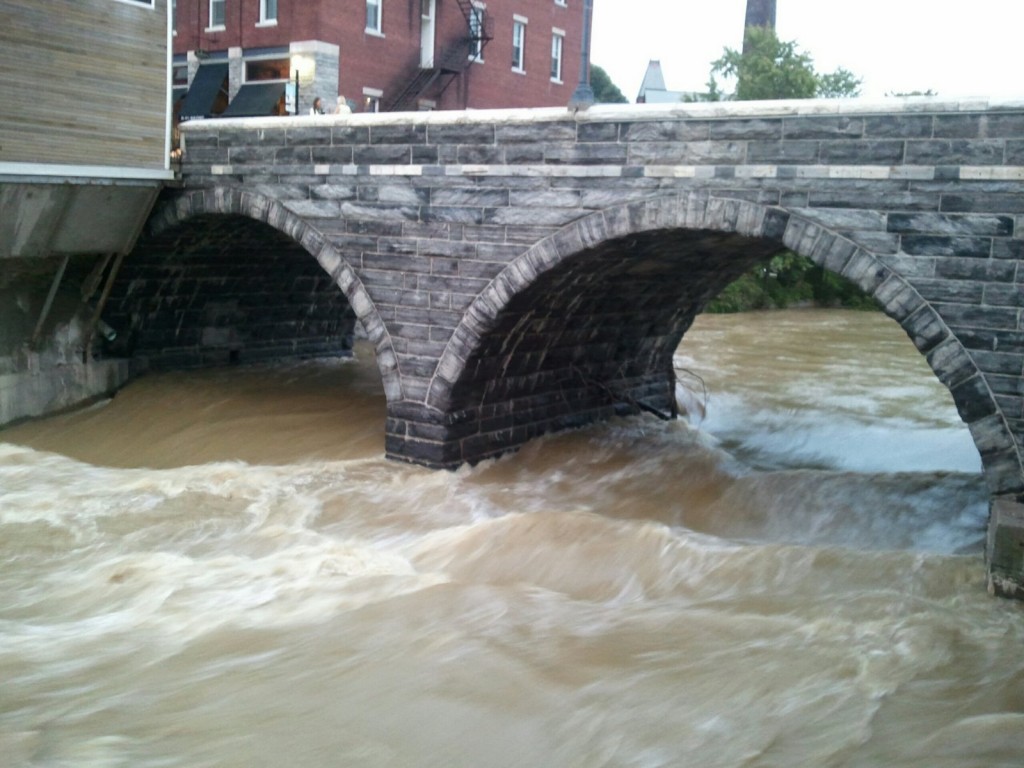
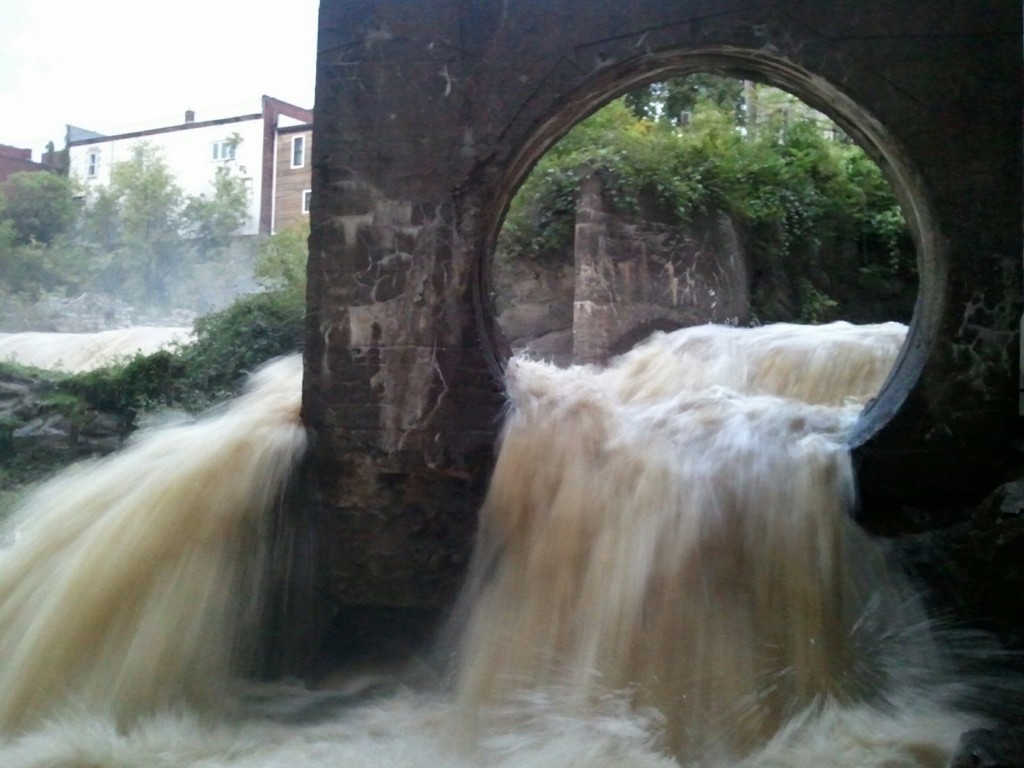
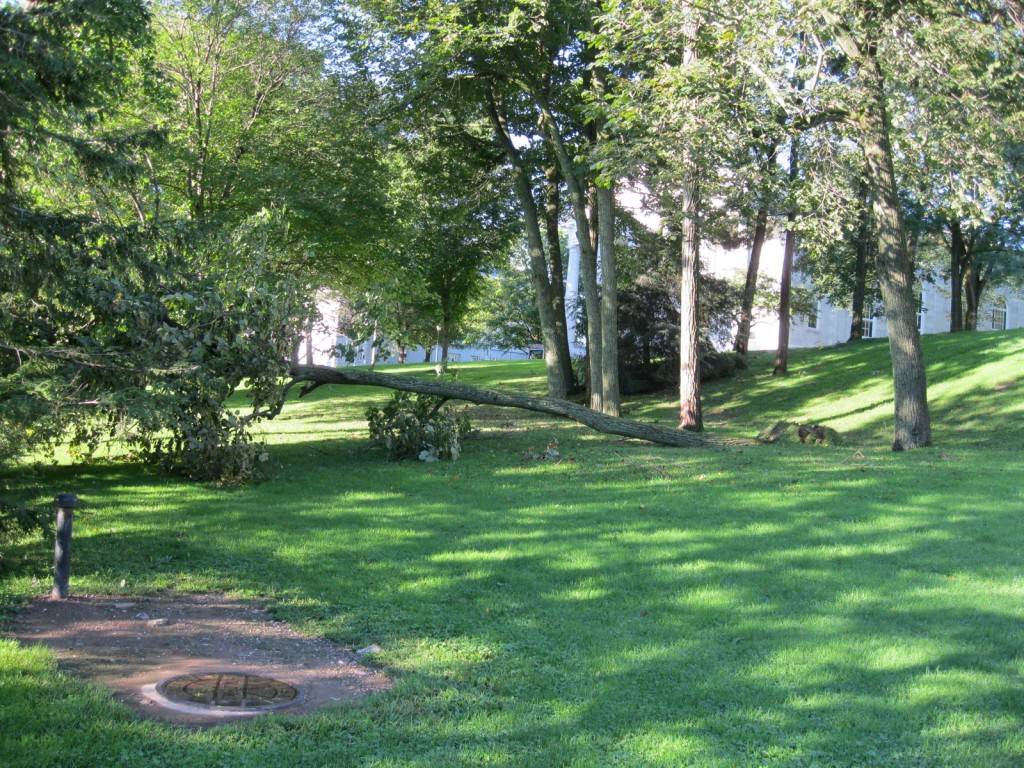
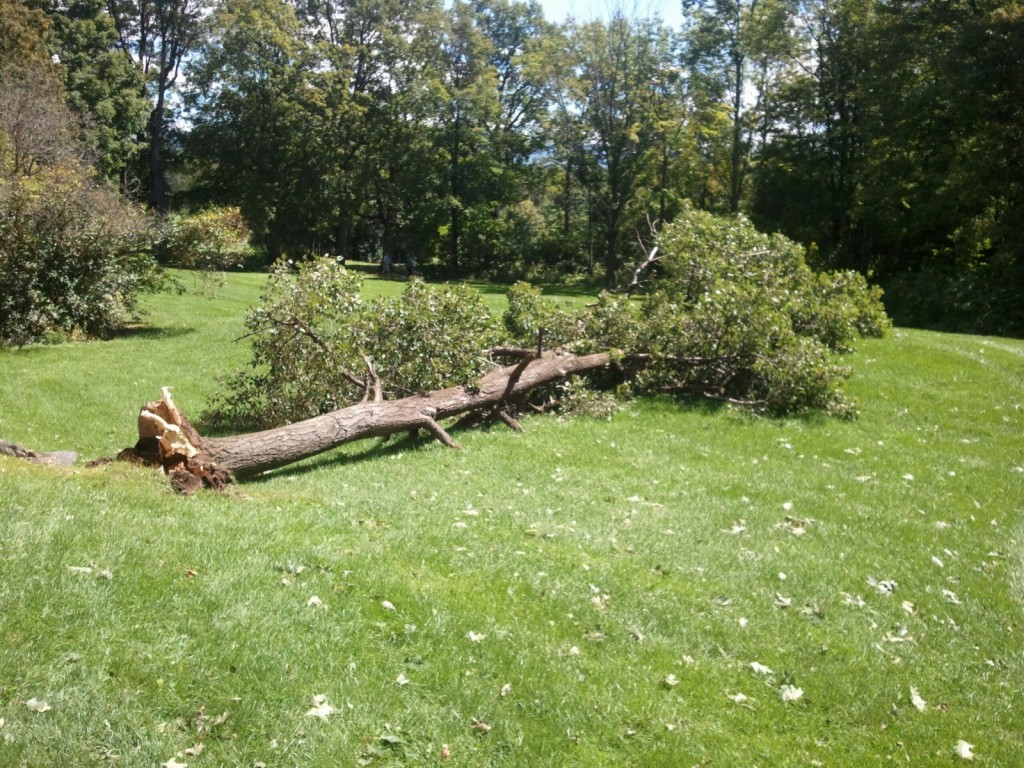
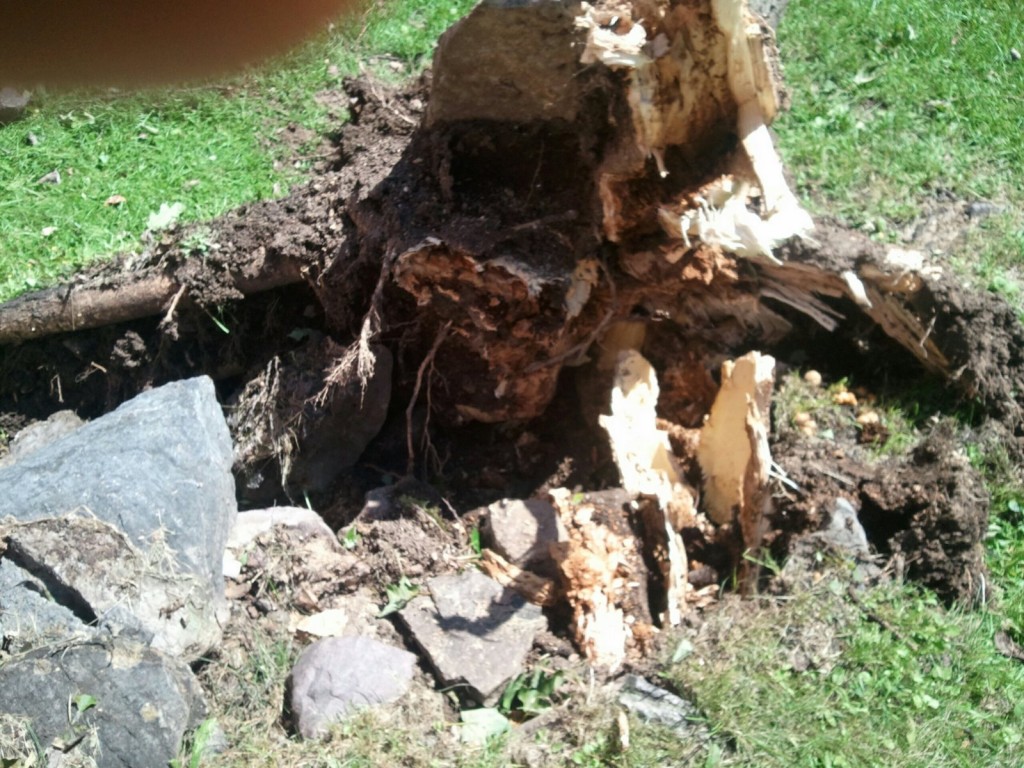
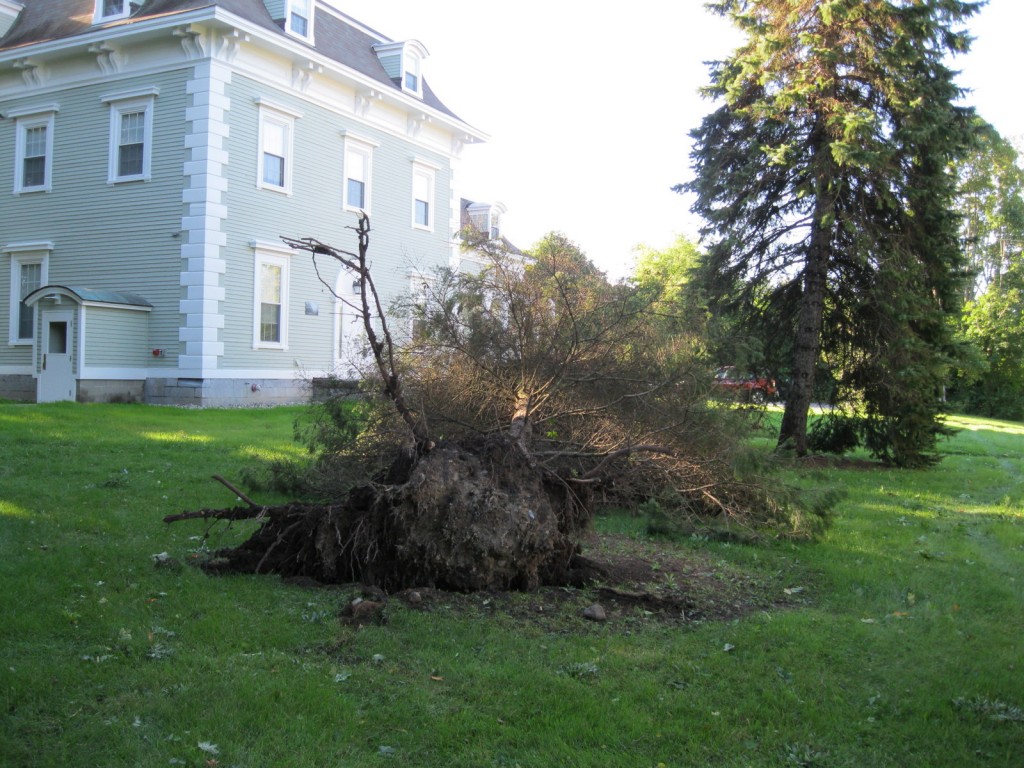
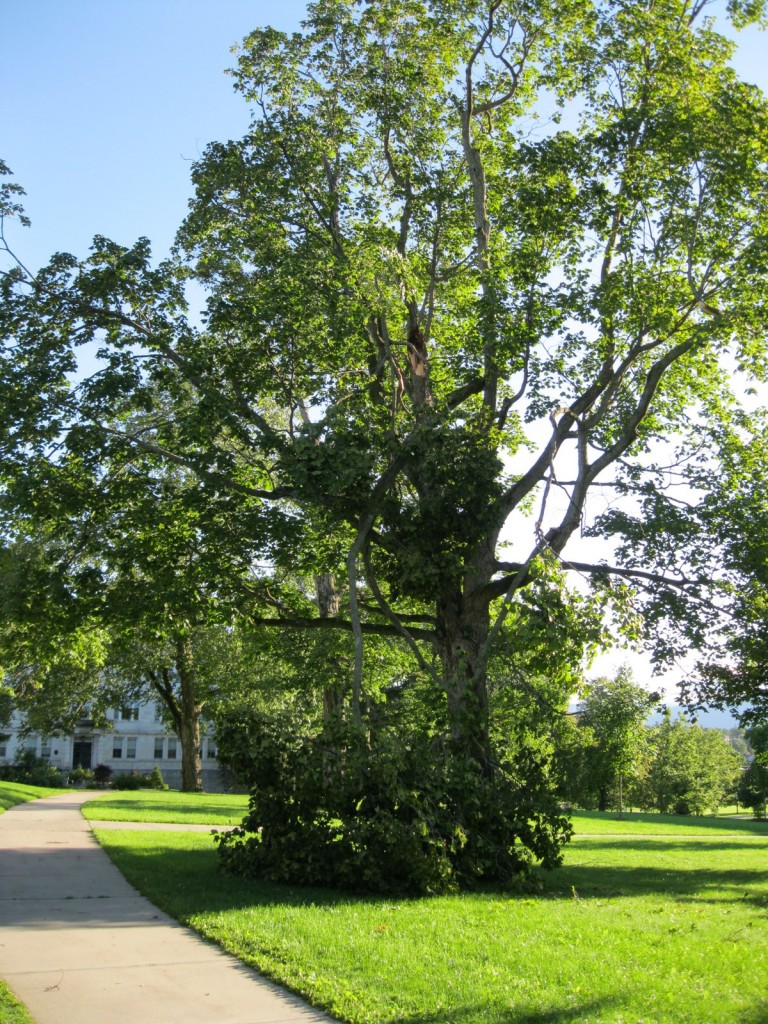
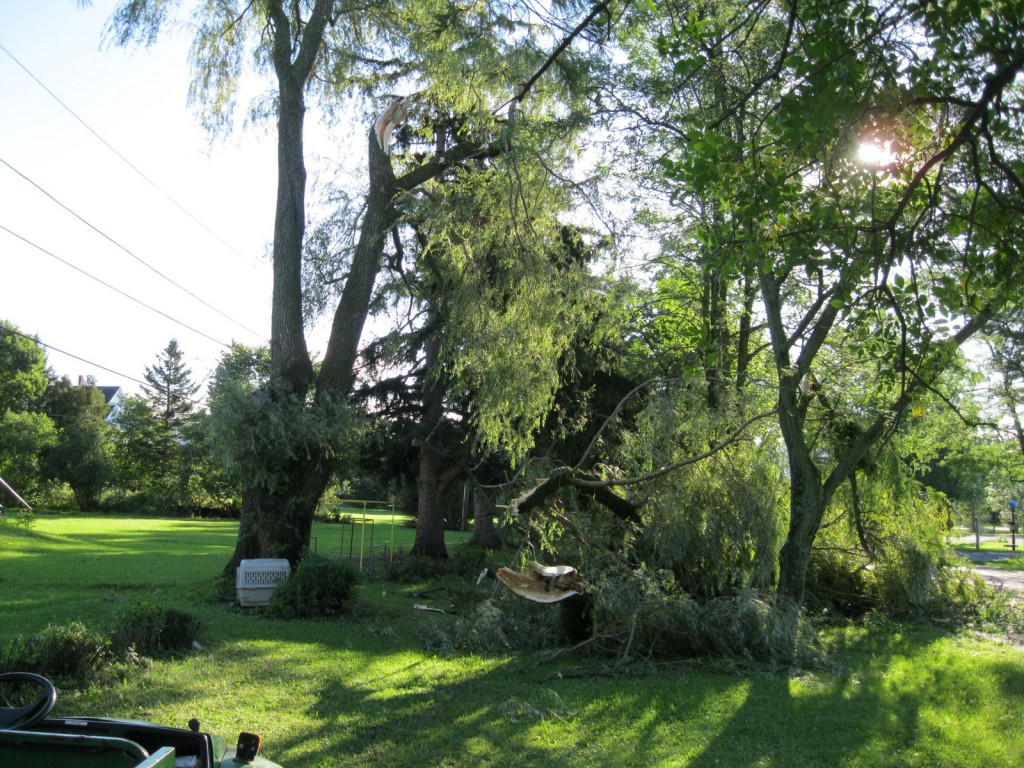
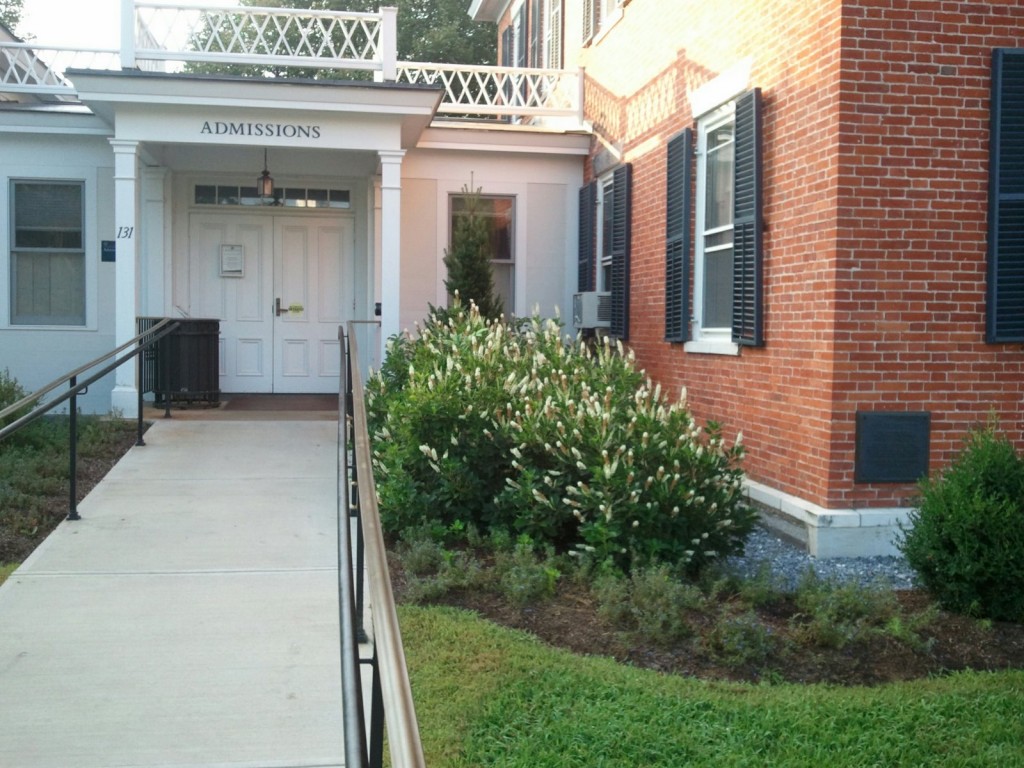
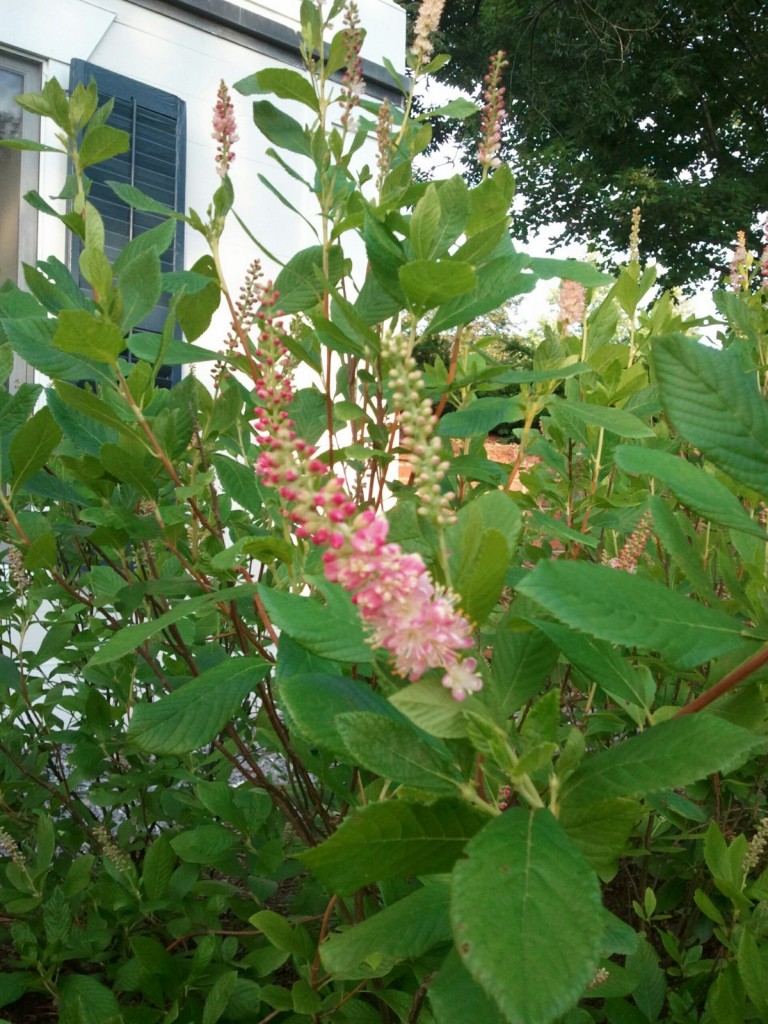




















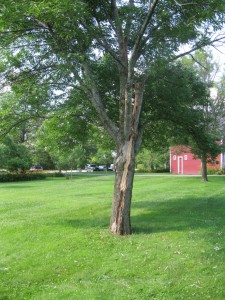
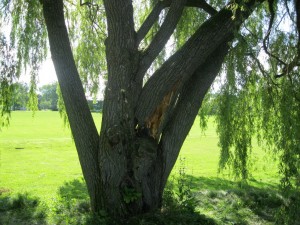
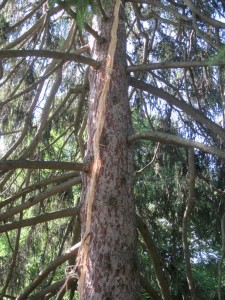
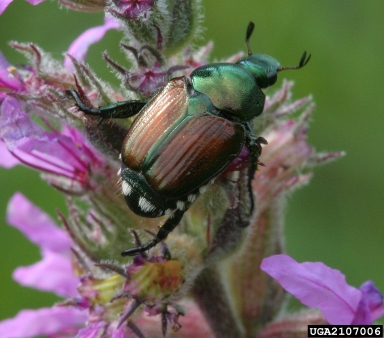
You must be logged in to post a comment.